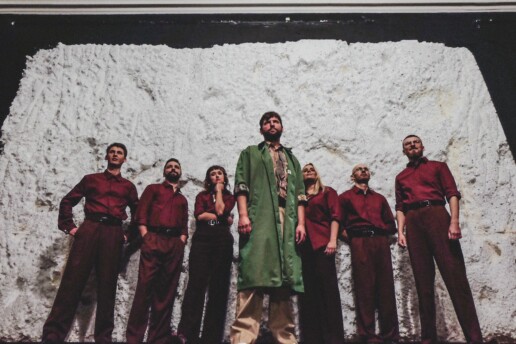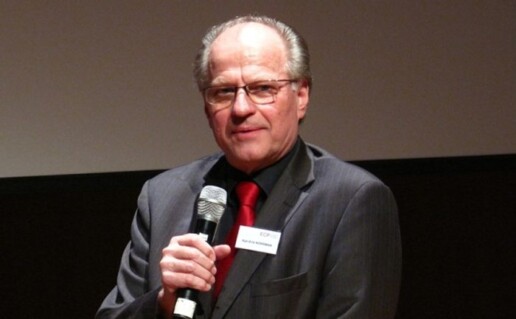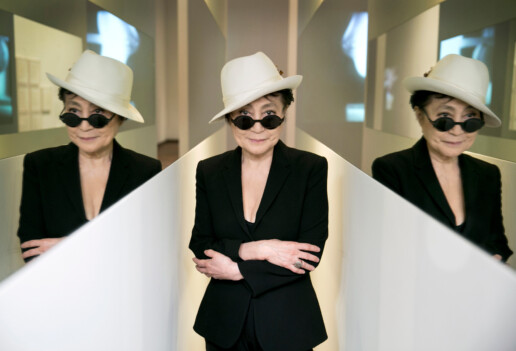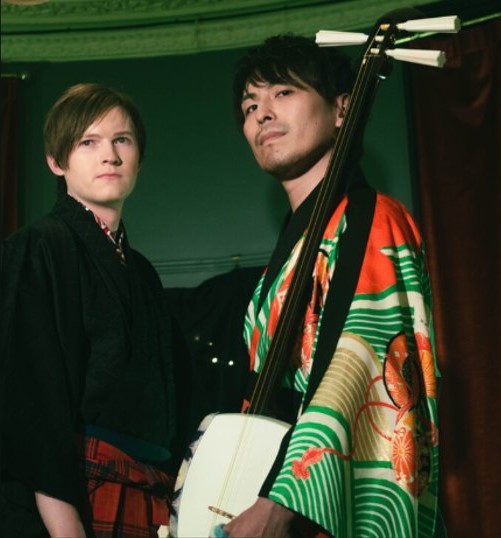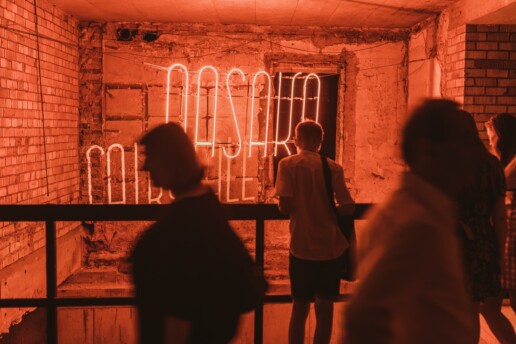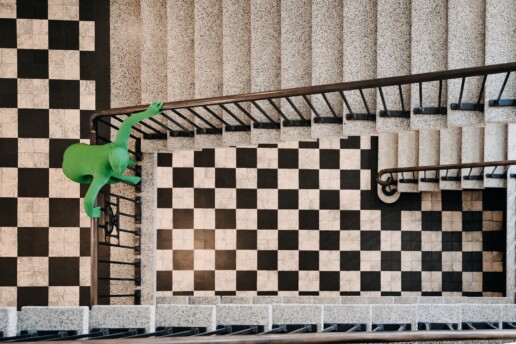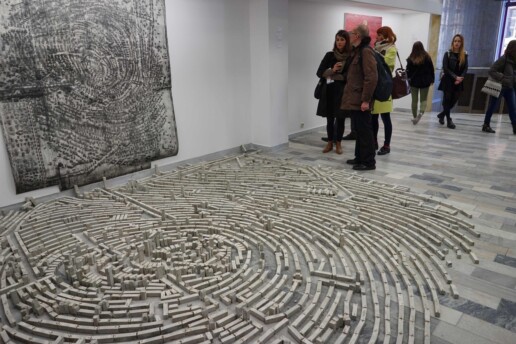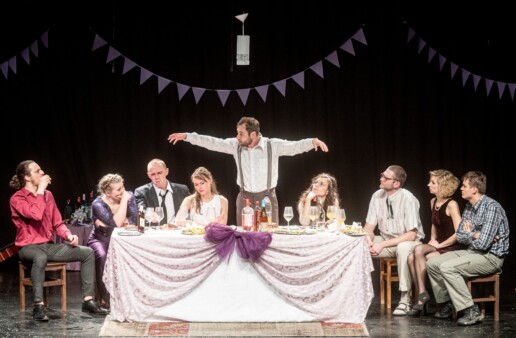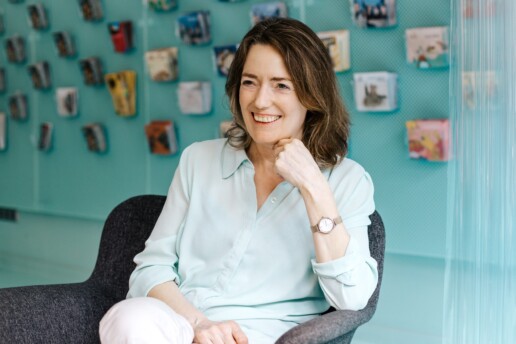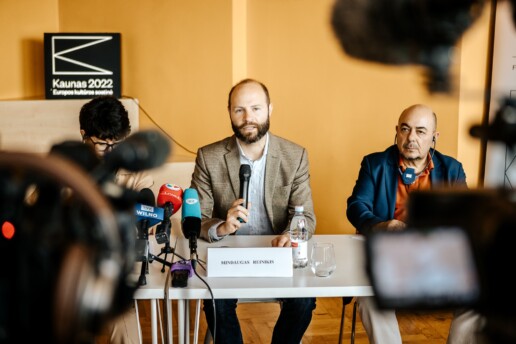Kaunas 2022 Summer Stage Not to be Stopped by Calendar: Concerts Scheduled Through September
2022-09-05Current Issues,News,media-news
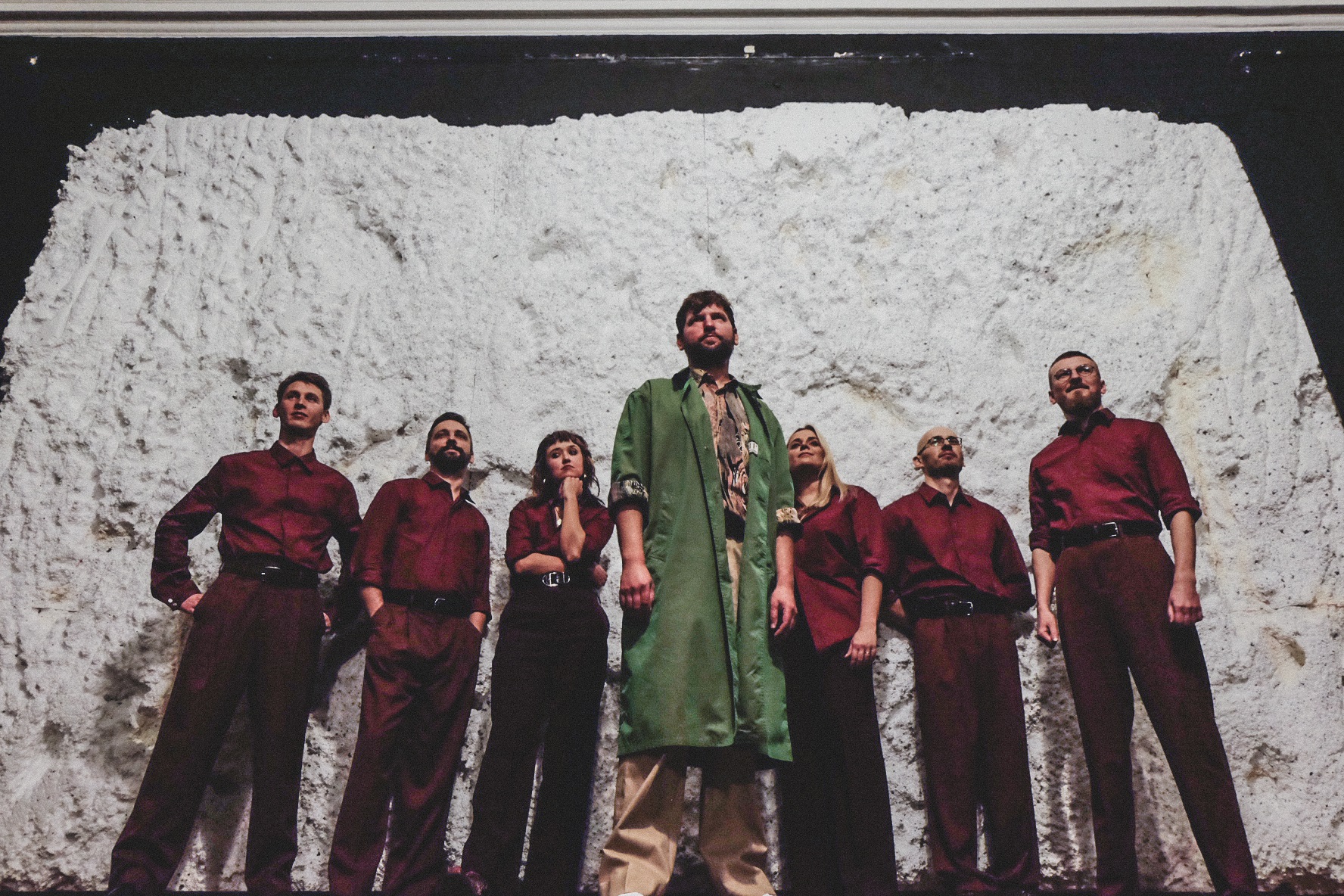
The rhythm of the contemporary capital of Kaunas does not succumb to the traditional limits of seasons. Launched in May, the Kaunas 2022 Summer Stage, located in Town Hall Square, continues its marathon of concerts with ten evenings planned for September. The repertoire includes performances by the Lithuanian ambassadors of the European Capital of Culture and their international counterparts and concerts by two unique orchestras.
Highlights of the Summer Festivals
After memorable festival tours, the Kaunas Town Hall Square will be home to many of the brightest stars of the Lithuanian alternative music scene in September. On 2 September, Flash Voyage will be hitting their home turf. After the band's spectacular performance at the Audra festival in July, the Kaunas-based psychedelic rockers promise to tell more than one guitar-based fairy tale heard in the woods or dreamt up by the lake.
You won't have to wait long for the next chance to sing along - on 3 September, Golden Parazyth will climb on the Kaunas 2022 Summer Stage and invite the crowd to search for the light. The evening's programme will include the most memorable sunsets, beautiful tree shades, fragrant plants and the wildest animal noises.
Another European Capital of Culture ambassador, who paints even the greyest skies pink during her performances, is also on her way to Kaunas. Rūta MUR, the Klaipėda-based electronic music artist, will throw a concert in Town Hall Square on 16 September. That evening, GISCHT, or Ursula Winterauer from Vienna, will share the stage with Rūta. In her creations, the Austrian artist explores the grey areas between ambient music and slow techno.
The last highlight of the Kaunas 2022 summer stage on 17 September will be sparked by Abudu, whose latest album 'Gaisras (Fire)' is still smouldering in the players of the fans of alternative sound. 'Between lyricism and rebellion' is not only the motto of Abudu but also that of the Swiss band Tim Freitag, who will be closing the open-air concert venue together with Lithuanians. This band is sure to make you cry. The only question is: from joy or sadness?
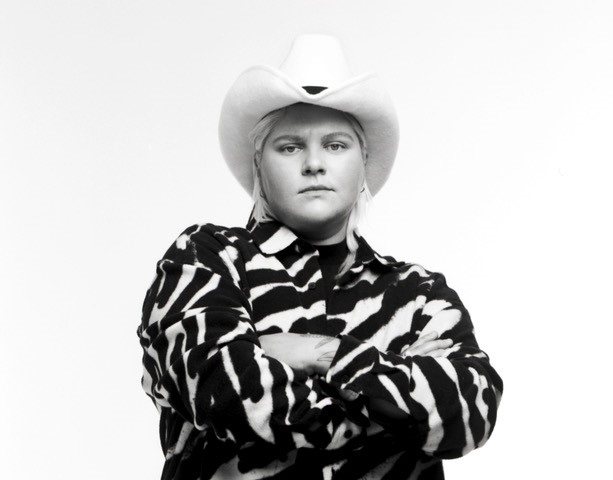
Two Unique Orchestras
Orchestra concerts have already become a tradition on the Kaunas 2022 Summer Stage. The last month of the extended season has two special guests. On the afternoon of 4 September, the refreshing sounds of strings and brass instruments will fill the Old Town of Kaunas, as the Lithuanian Joint Klezmer Orchestra will deliver a special programme. The Rakija Klezmer Orkestar, percussionist Arkadijus Gotesmanas and violinist Boris Kirzneris will come together, especially for this year's CityTelling festival. The orchestra will invite you to bring back the tradition of klezmer, or Jewish folk, which almost disappeared after the Second World War.
The following exceptional guests on the Kaunas 2022 summer stage will arrive on 15 September from a Kaunas' partner city in Poland. The Toruń Improvisers Orchestra couldn't have chosen a better venue for their programme dedicated to the poet Adam Mickiewicz. After all, it was at the Jesuit Gymnasium in Town Hall Square where he once taught! The essence of the orchestra's project 'Local Landscape: Ballads and Romances' is to show the universality and cosmos of meanings of Mickiewicz's 'Ballads and Romances' in relation to contemporary times, culture and contemporary art. This year, the book turns 200 and 2022 in Poland is the Year of Polish Romanticism.
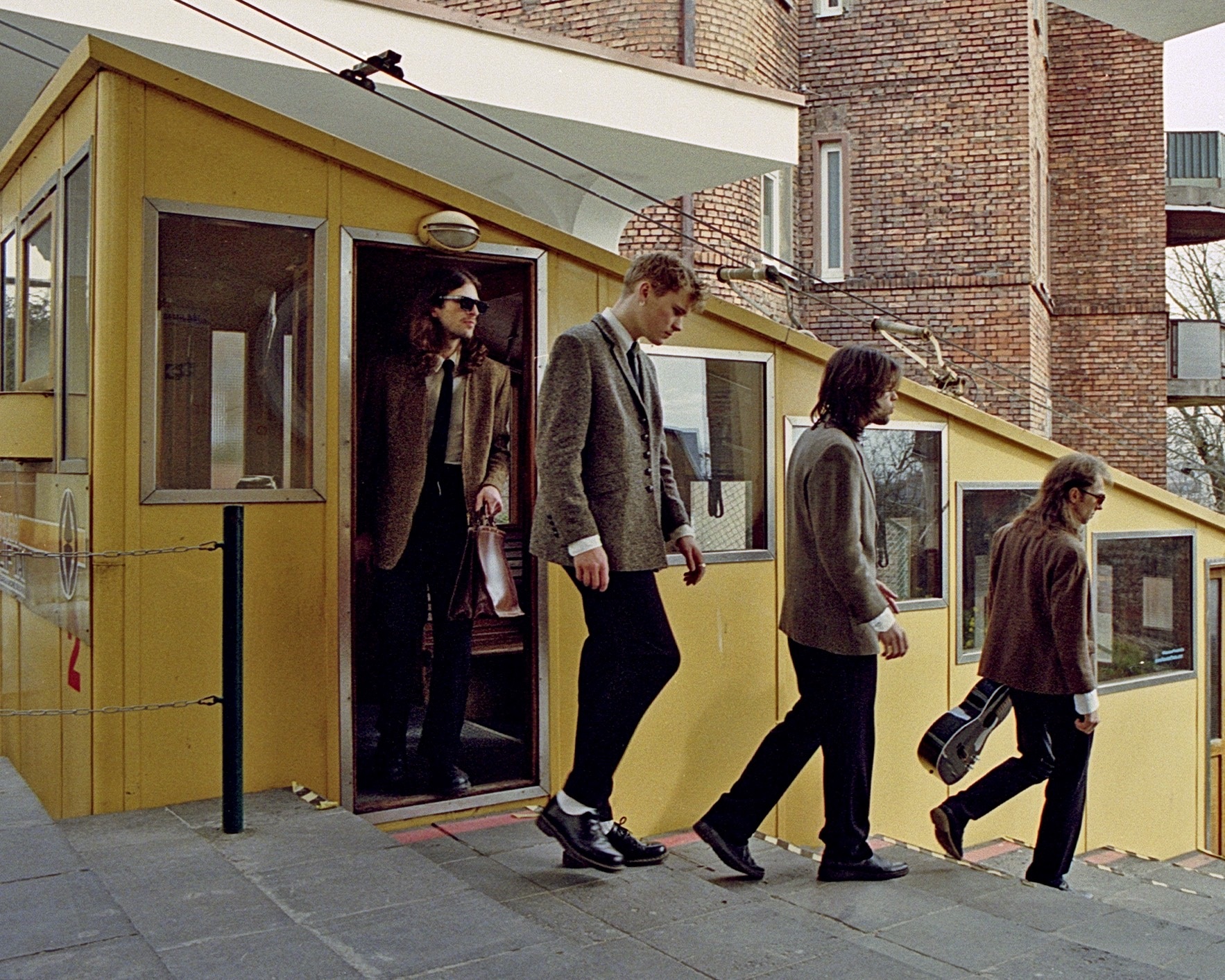
Costume Workshop and Rehearsal Before the Fluxus Festival
One of the most anticipated events at the beginning of Autumn in Kaunas, when Parodos Hill will be closed to cars after dark and opened to the motley crowd of dressers, is the Fluxus Festival. On 10 September, this event will take place for the fifth time, so every Kaunas resident living in Fluxus's spirit must dress accordingly. Those who are yet to create their own Fluxus alter ego are welcome on 9 September from 5 pm at the Town Hall Square. ‘You will find the necessary tools in the workshop, but if you want to bring glitter, ribbons, wigs, boxes and other tools that are sleeping in the cupboards, you are welcome to do so and turn them into the craziest costume,' the organisers say.
Tomorrow’s Music in the Heart of Lithuania
What’s Next In Music, a showcase festival and conference traditionally held in the capital in September, will also visit Kaunas this year. On 10 September, the bright stars of tomorrow will take to the stage of the European Capital of Culture.
The programme will feature the Kaunas-based French singer Clara Giambino, the Vilnius post-punk band Local Blood, the Italy-based Albanian electronic music duo Shkodra Elektronike and the Estonian Andres Kõpper who will introduce himself as NOËP.
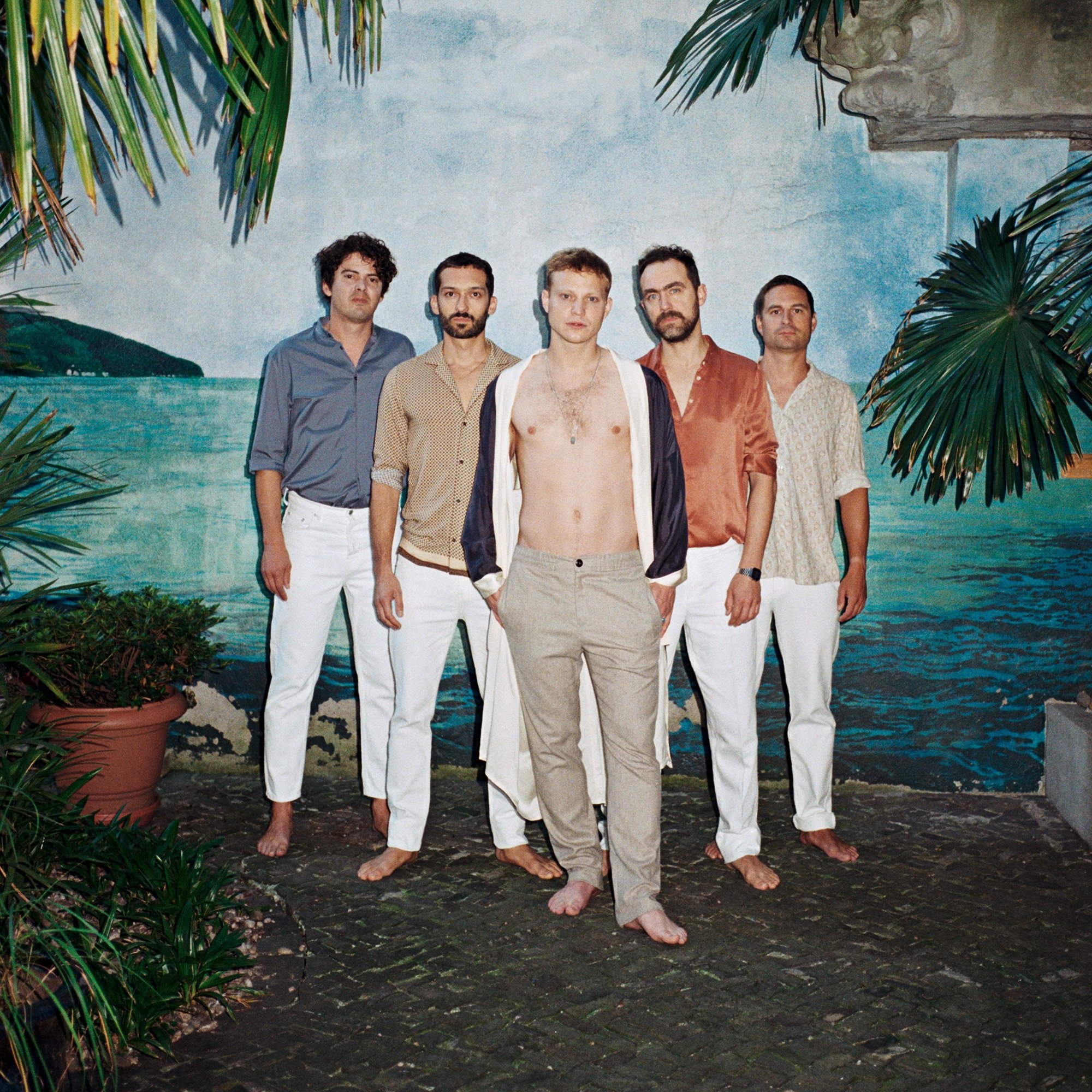
The European Capital of Culture programme in Kaunas and the Kaunas region continues throughout the year, with hundreds of traditional and debut events planned for 2022, including exhibitions, festivals, performances and other activities created by local and international artists and Kaunas communities. For the complete Kaunas 2022 programme, please visit www.kaunas2022.eu or the mobile app.
Karl-Erik Norrman: it’s very important to defend European values today
2022-08-30Current Issues,News,media-news
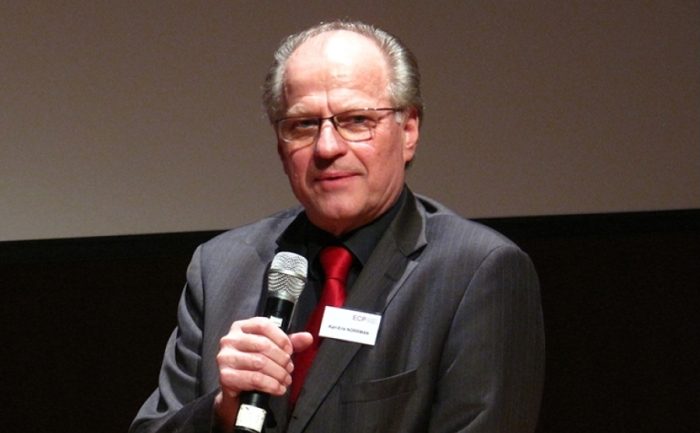
“This year, it’s very important to defend European values: in times of war and opposition against democracy, human rights, freedom of movement etc. That will be one of the main reasons of our meeting in Kaunas. We also think it’s significant that we’re meeting in a university – here we will discuss the promotion of the role of universities in European cultural cooperation”, says ambassador Karl Erik Norrman, founder and Secretary General of the European Cultural Parliament (ECP). On 8–11 September, he will participate in the ECP’s session in Lithuania – at Vytautas Magnus University and the premises of Kaunas the European Capital of Culture 2022.
During the session of the European Cultural Parliament, Kaunas will be visited by ECP members, which include independent artists, writers, musicians, historians, philosophers, designers and representatives of other cultural fields from Great Britain, Sweden, Greece, Ireland, the Netherlands and other European countries. During the session, discussions, creative workshops and exhibition openings will be held. At the events, which will open to the public, topics related to Europe and its culture will be discussed: the role of universities in the European capitals of culture, cultural diplomacy, the role of culture in the context of war and other matters. Understandably, Ukraine will also be remembered: not just in discussions but in exhibitions as well. At VMU Great Hall, an exhibition by Ukrainian photographer Oleksandr Zakletsky will be exhibited.
“You can say that this year Ukraine is becoming a symbol of cultural diplomacy. In these very difficult times, Ukraine is doing a great job. We hear and see a lot of Ukrainian artists promoting their case as Europeans, as democrats etc. President Zelenskyy himself is a great cultural diplomat, he’s speaking to the whole world about European values”, – explains Karl-Erik Norrman, who is not only one of the founders of the ECP but also works as a lecturer of cultural diplomacy at the Institute of Cultural Diplomacy in Berlin. According to him, the importance of cultural diplomacy is growing every year.
The Secretary General of the ECP also has many compliments to Lithuania and Kaunas, which is the European Capital of Culture this year and is holding various cultural events. “It is a very good program, and you’re doing it in a very tough time, with a lot of threats and pressure from your big neighbour. I think the Lithuanian approach is really to be praised. Our slogan is “to put culture first”, and we hope that Lithuania will continue to put culture first”, Karl-Erik Norrman says, expressing admiration of the program of Kaunas the European Capital of Culture.
He is also glad that in October, the VMU Agriculture Academy in Lithuania will host an international conference organised by the University Network of the European Capitals of Culture (UNeECC). This network aims to strengthen the role of universities in the events of European Capitals of Culture.
“This cooperation is very important: it will certainly inspire other universities to more actively participate in the cultural capitals. I think VMU is better than European average in this regard. Generally, I think it’s very important for universities to promote humanities and arts in their syllabus so that their place would not be taken by the more “concrete” sciences. I’d encourage VMU to take a strong role in promoting culture and cultural cooperation”, says the ECP Secretary General.
The European Cultural Parliament was founded in 2001, in the premises of the Council of Europe in Strasbourg, in order to ensure that independent artists would be heard in order to balance the growing influence of technocracy. “Ethical and aesthetic values must be the essence of a new European Society. We also say that culture is the core of society and creativity is the source of human existence. ECP aims to amplify the voices of independent artists and to intensify the dialogue between artists and other creative individuals. So we’ve created a forum at the ECP for continuing dialogue year after year, for 28 years. We might say that we give globalisation a kind of human dimension through this forum”, claims Karl-Erik Norrman.
In total, ECP has 160 members from 43 European countries. The parliament organises various international projects, e.g. between musicians, philosophers and visual artists from Italy, Austria, Denmark and other countries. ECP has also contributed to political changes at the European level.
“An ECP research group looked at the economic role of culture in Europe. We came to the conclusion that the economic role of the creative sector had been underestimated before. We presented this report to the President of the European Commission and, as a result, the following year the EU started showing in its statistics that the cultural and creative sector represents some 3 percent of the total European GDP and almost 4 percent of the labour force. The people in the culture sector are working on a lower income level than the average but they are very important”, emphasises the Secretary General of the ECP, noting that the parliament contributed to changes in the European institutions’ agenda and promoting cooperation of European artists.
The European Cultural Parliament will hold its Kaunas session on 8–11 September at Vytautas Magnus University (VMU) and the premises of Kaunas the European Capital of Culture 2022. During the session, which is open to all representatives of culture and members of the public, various topics related to Europe and its culture will be discussed, including, but not limited to, the role of universities in the European capitals of culture and the culture of Europe in general as well as the particularly topical issues of cultural diplomacy and the role of culture in the context of war.
The founders of the ECP include Finland’s former Minister of Foreign Affairs Pär Stenbäck, former Swedish diplomat, opera soloist, professor of international relations Karl-Erik Norrman, author of The Illustrated History of Europe Frederique Delouche and others. Senators of the parliament: Benjamin Bradshaw – former British Minister of Culture, Erna Hennicot-Schoepges – former Minister of Culture of Luxemburg, Memli Krasniqi – former Minister of Culture of Kosovo, Ivaylo Znepolski – former Minister of Culture of Bulgaria and others. Past members of the ECP included journalist Anna Politkovskaya and philosopher, culture politician Leonidas Donskis, who have sadly passed away. This year the ECP is joined by the Dean of VMU Faculty of Arts, Professor Jurgita Staniškytė, lecturer of VMU Music Academy, pianist Rimantas Vingras and head of Kaunas 2022 Virginija Vitkienė.
Participants of ECP Kaunas session must register online (HERE) before 6 September.
The event will be held in English.
Website of the European Cultural Parliament
The ECP Kaunas session is part of the program of Kaunas the European Capital of Culture 2022.
About Karl-Erik Norrman
Ambassador Karl-Erik Norrman is founder (2002) and Secretary General of the European Cultural Parliament (ECP), the only Pan-European forum for cultural personalities of all sectors of Arts. The ECP has 160 members from 43 European countries.
As a Swedish diplomat for 30 years he served i. a. in Moscow, Beijing, Geneva and Rome, dealing mainly with foreign policy, trade negotiations, cultural affairs, development cooperation, humanitarian affairs and the United Nations. As Ambassador since 1989 he was posted in Spain and Swedish Commissioner General at EXPO 92 in Seville. In 1994, Karl-Erik Norrman was appointed the head of the Cultural Department of Sweden’s Ministry for Foreign Affairs. From 1995 he was Executive Member of the Commission for Sweden Promotion Abroad at the Foreign Ministry. Norrman has also been an opera soloist (tenor) and is the author of more than 30 books about democracy, world population matters, Germany, China, India, UN, theatre, opera, design, food and other topics. He participates in the public debate in Swedish, German, British, Scandinavian and other international media and conferences. Since 2010, he has been guest lecturer of cultural diplomacy and European affairs at the Institute for Cultural Diplomacy, ICD, in Berlin. He is member of several International Boards, e.g. Place Branding and Public Diplomacy, London, Institute of Cultural Diplomacy, Berlin, Vizar Architectural Competition, Sofia, Music Mind Trust, Sussex, Harald Edelstam Human Rights Foundation, Stockholm, Fondazione Love Difference, Biella and Population Matters, London.
A long-awaited event in Lithuania: the exhibition The Learning Garden of Freedom by the world-renowned artist Yoko Ono opens in autumn
2022-08-25Current Issues,News,media-news
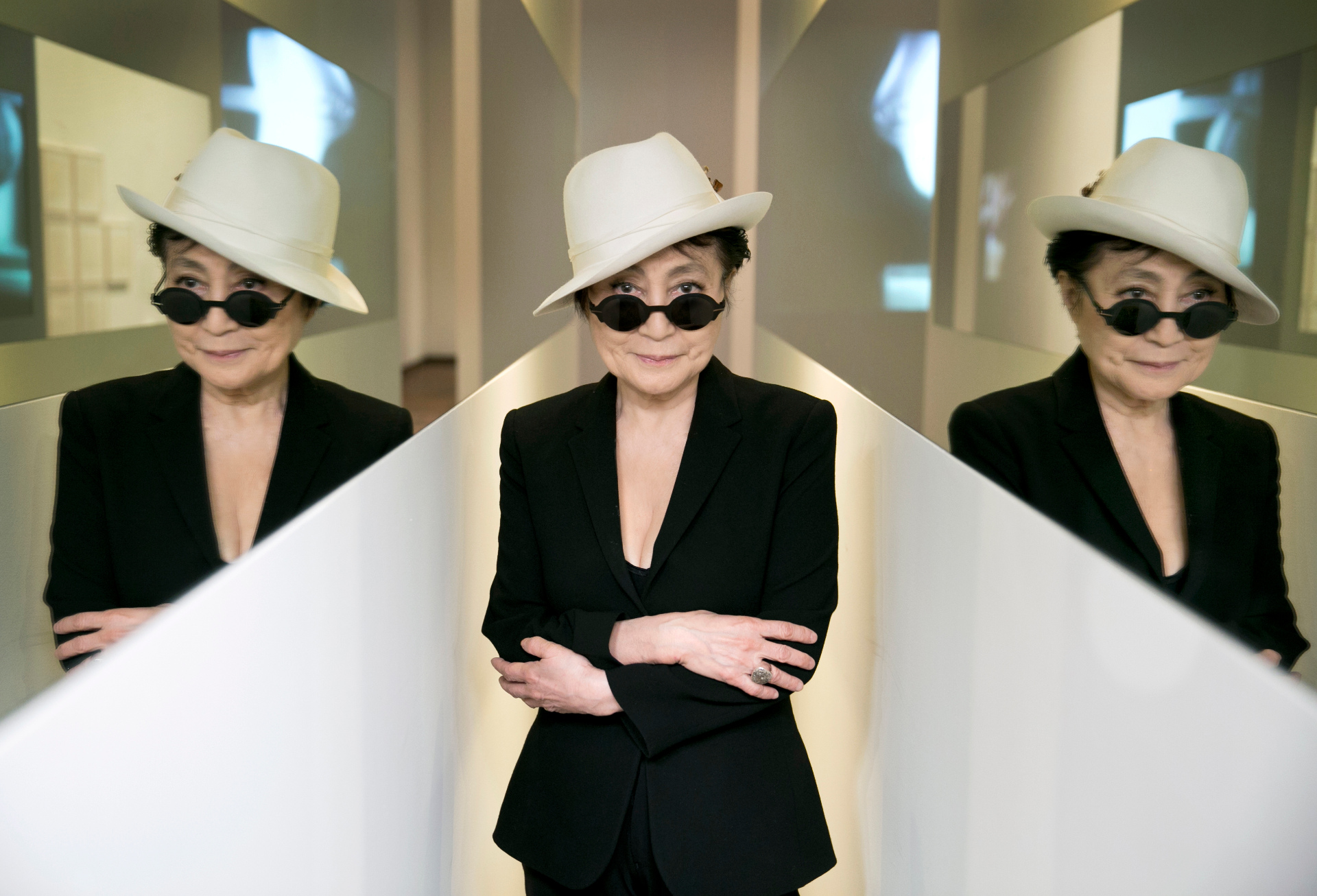
On 10 September this year, the exhibition The Learning Garden of Freedom by the world- renowned artist Yoko Ono will open at Kaunas Picture Gallery. The show will feature conceptual artworks, installations, objects, experimental films, performances, sound and text works. While waiting for the exhibition, Kaunas residents and guests are also invited to visit Yoko Ono’s installation Ex It currently on display at the Kaunas branch of the Bank of Lithuania. The installation works as the introductory part of the retrospective exhibition and will be on display until 11 September.
Yoko Ono (b. 1933, Tokyo) began her career in the 1950s. She worked closely with George Mačiūnas, the founder of the Fluxus movement, and her first solo exhibition (featuring works from the Instruction Paintings series) was held in 1961 at New York’s AG Gallery, also founded by Mačiūnas and Almus Salcius. In addition to her innovative paintings and performances, the artist later began to create objects, films and spatial installations, to bring other artists together in collaborative actions, and to invite the audience to actively engage in artistic processes. In her performances and other works, Yoko Ono raises issues closely related to the feminist movement, such as the female body and women’s empowerment in society. The artist’s name is also often associated with the pacifist movement, which remains more than relevant to this day.
One of the central components of Yoko Ono’s work are ideas. They can be serious or playful, utopian or poetic, expressed in words or actions, realised as objects and installations or simply in the imagination of the audience. Her work is highly political and social, not losing its relevance with the flow of time, encouraging the viewer to critically assess the world around them and, by using the language of art, to actively express one’s position on important socio-political issues. The Learning Garden of Freedom is an invitation to get to know Yoko Ono’s work and to reflect on the seriousness and playfulness of life as well as the power of imagination.
The exhibition is organised by the Contemporary Art Centre (Vilnius, Lithuania) in collaboration with the Serralves Museum of Contemporary Art (Porto, Portugal) and Yoko Ono’s studio Studio One (New York, US), and curated by the artist’s long-time friend and curator of Fluxus exhibitions, Jon Hendricks. It is a continuation of the exhibition held at the Serralves Museum in 2020, specially adapted for Kaunas, George Mačiūnas’ hometown. The exhibition is organised as part of the project Kaunas – European Capital of Culture 2022 and will run until 4 December this year.
Japanese music concert. Tsugaru shamisen & taiko
2022-08-25Current Issues,News,media-news
This year marks the 100th anniversary of friendship between Japan and Lithuania. To celebrate this occasion, we are happy to invite you to a Japanese music concert, which will take place on September 2, 18:00 at Business Leaders Center BLC, lobby of the Building D (K.Donelaičio g. 62).
The concert will be provided by Hibiki Ichikawa (Japan), a traditional Japanese three-stringed instrument Tsugaru shamisen artist, together with his student Luke Burns (United Kingdom).
The concert is free of charge, however, the number of seats is limited.
Hibiki Ichikawa is a London based Tsugaru Shamisen player with over 15 years of experience in playing this unique and fascinating instrument. He first came to the United Kingdom in 2011. Officially recognized as a world leading talent of Tsugaru Shamisen, Hibiki regularly performs across the UK and Europe.
His professional activities include teaching more than 20 students and collaborating with several musicians and artists in a variety of projects. In 2016, he took part in the recording of the soundtrack for the BAFTA-winning stop-motion animated film “Kubo and the Two Strings”, produced by Laika Studios.
Luke Burns has been studying Tsugaru Shamisen and Taiko drums in London for 4 years. Luke is a student of Hibiki Ichikawa, the only professional Tsugaru Shamisen player in Europe, and learns Taiko from Liz Walters with the “Tamashii School of Taiko”.
Along with Joshua Green, another of Hibiki’s students, Luke is part of the duo "DENSHONEN", mixing Tsugaru Shamisen with Taiko and Guitar.
Both Hibiki and Luke have been appointed by “Nike” as their official brand ambassadors for DUNK shoe series.
Lets enjoy the sound of traditional Japanese music!
The event is organized by the Embassy of Japan in Lithuania.
Kaunas 2022 to Gather Litvaks From all Over the World to Their Ancestral Land
2022-08-23Current Issues,News,media-news
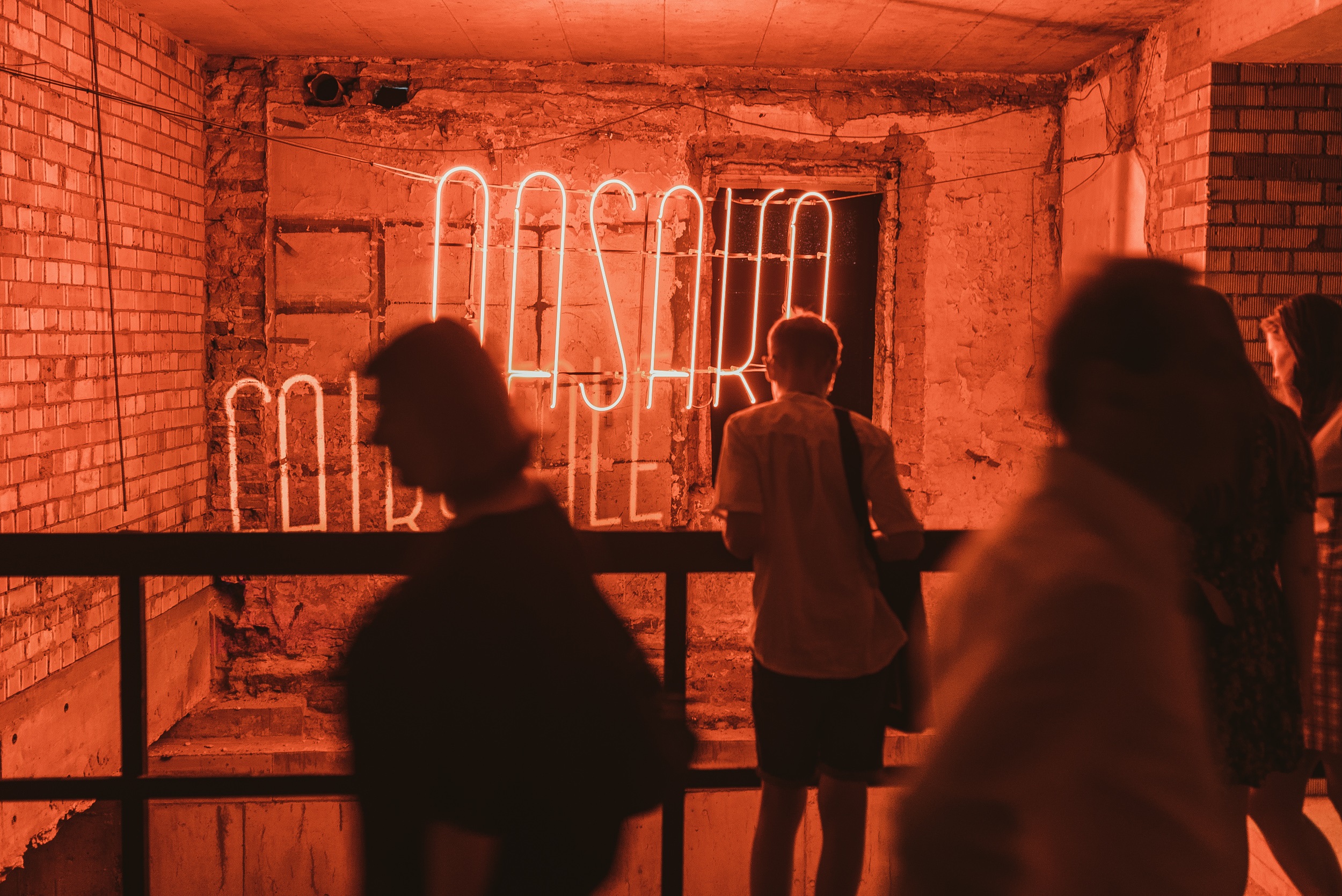
“For me, this forum is like a wrap-up of the entire Jewish memory programme of Kaunas - European Capital of Culture. It is the culmination of our many years of efforts to build bridges of cooperation and dialogue,” says Daiva Price, the initiator of the Litvak Culture Forum and the curator of the Kaunas 2022 programme Memory Office. The event will welcome Litvaks returning to their ancestral land or arriving here for the first time on 29-30 September.
Before the First World War, about 2 million Litvaks - the name used by Jews of the region - lived in the former lands of the Grand Duchy of Lithuania, in the eight provinces of the Russian Empire. 2 million is 12% of the population. In Kaunas or Kowno, the centre of the gubernia, the Jewish population was as high as 35.32%, and today it’s just a few hundred people.
The Litvaks spread worldwide in the second part of the 19th - the beginning of the 20th century. They remained the smallest Jewish group after the Holocaust. Today, Litvaks live in Israel, the USA, South America, South Africa and other countries. Many of them have roots in Kaunas. As the European Capital of Culture 2022, the city is hosting the forum as the first event of such kind.
The two-day event in the Great Hall of Vytautas Magnus university will feature a rich cultural programme and discussions between renowned artists, scholars and representatives of the world of culture on what it means to be a Litvak and the search for a common Lithuanian and Jewish identity. It will ask whether art helps us to remember and whether perpetuating memory can help us to build a better future and promote openness and dialogue.
The Litvak Culture Forum is part of the Kaunas 2022 CityTelling Festival, which will run until November. According to the curator of the Memory Office programme, the leitmotif of this year’s festival - a journey home - means not only a more profound knowledge of the city, its history and oneself in it but also perhaps the first visit to the land of one’s ancestors. A land that was too painful to enter for years. This has happened to some world-renowned artists featured in Kaunas 2022, such as William Kentridge. His exhibition at the National M. K. Čiurlionis Museum of Art is busy throughout the year.
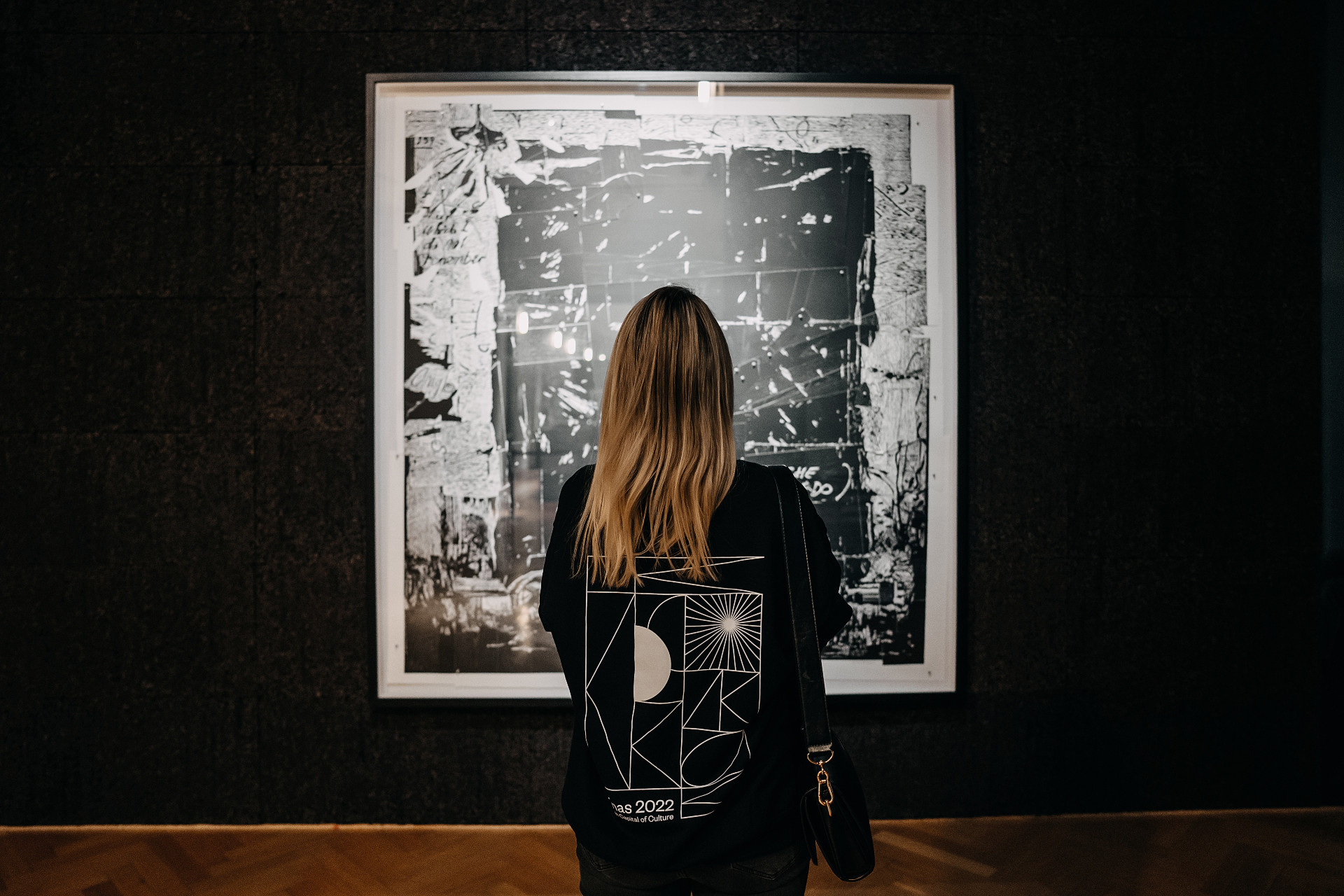
This year has also been an opportunity for artists such as Jenny Kagan, Philip Miller, Bruce Clark, Marilia Destot and others to come and return to their ancestral land with their art. Many of them will share their experiences in the programme of the Litvak Cultural Forum. They will be joined by stars from the academic world, members of the Advisory Board of the Litvak Cultural Forum - Prof. Antony Polonsky, Prof. Peter Salovey, Prof. Tsvia Walden and others.
The two-day Forum programme will be enriched by exhibitions, performances and concerts dedicated to Jewish memory. The calendar includes events such as the interactive exhibition “Out of Darkness” by the UK artist Jenny Kagan, the Threshold installation route reminiscent of the Mezuzah tradition by Jyll Bradley, a photographic exhibition of the interwar photographers Mausha Levi and Shimon Bayer, and the paintings of Simon Karczmar. On 29 September, a concert of Yiddish songs by Marija Krupoves will take place at Žalgirio Arena, dedicated to the Jewish memory of the city and the unique spirit of Kaunas.
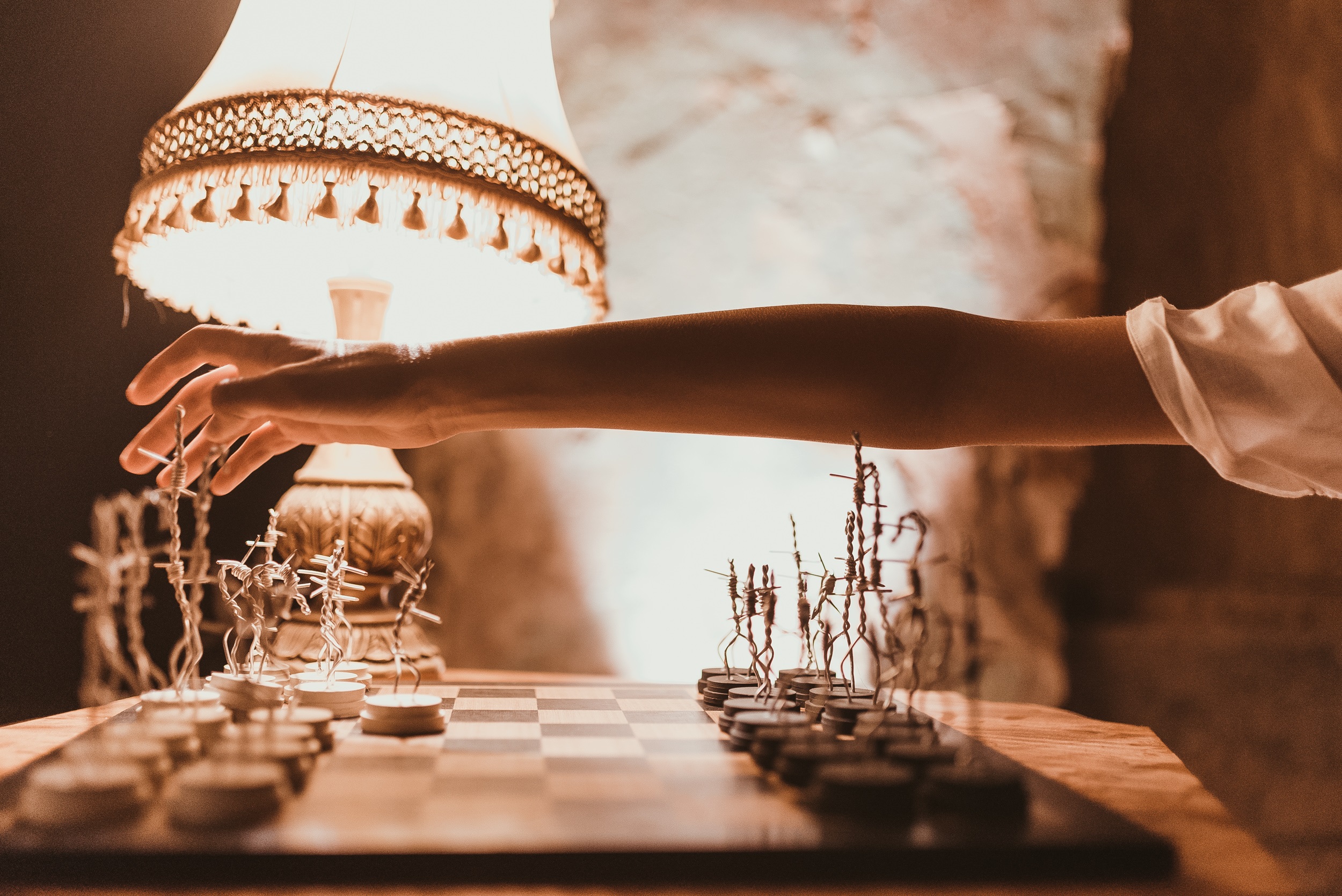
On 30 September and 1 October, a special premiere which took a few years to prepare will be held. It is the Kaunas Cantata by the South African composer Philip Miller and Jenny Kagan. In the language of music, texts and images, it tells the complex story of historical upheavals, the Holocaust, deportations and personal traumas, and the traces they have left in the lives of generations and individuals. A spectacular labyrinth of music and images is created in collaboration with Lithuanian and foreign artists of various genres.
The premiere will be performed at Žalgirio Arena by more than 200 musicians, the Kaunas City Symphony Orchestra, professional and community choirs and ensembles. “The cantata invites us to open up difficult and traumatic themes, and it invites us to confront ourselves, to talk about difficult choices in the face of dramatic events. It is therefore particularly relevant in the context of today’s war,” says Ms Price.
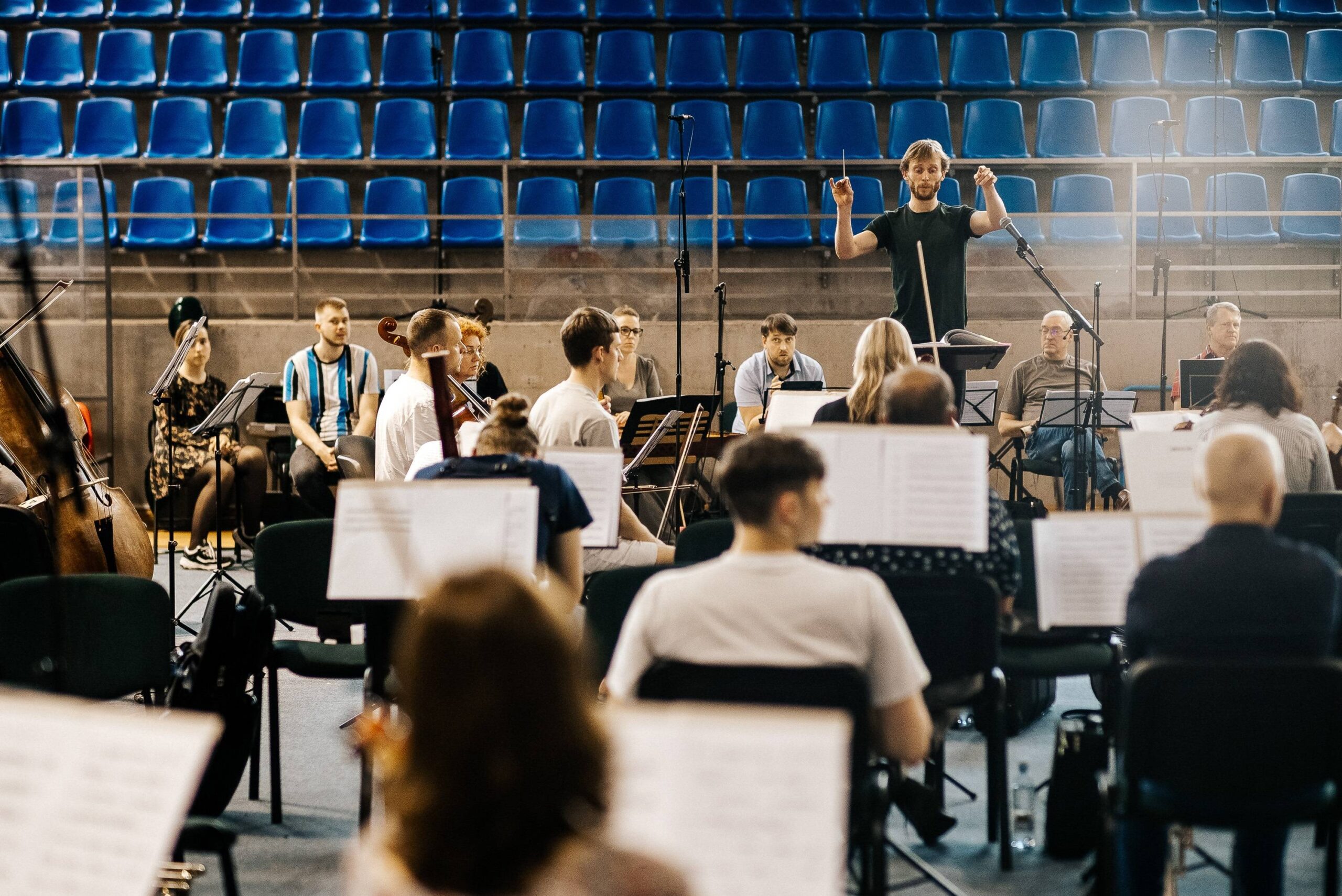
The patron of the Litvak Cultural Forum is Prime Minister Ingrida Šimonytė. Honorary Patrons are Prof. Liudas Mažylis and Faina Kukliansky, President of the Lithuanian Jewish Community. The forum is partnered with Vytautas Magnus University and Kaunas Jewish Community.
The Kaunas 2022 Litvak Culture Forum programme is available here, and registration is now open. For the complete Kaunas 2022 programme, please visit www.kaunas2022.eu or the mobile app.
Curator of Modernism for the Future Program: “Kaunas is Waking up and is Becoming More Open to new Experiences”
2022-08-16Uncategorized,Current Issues,media-news
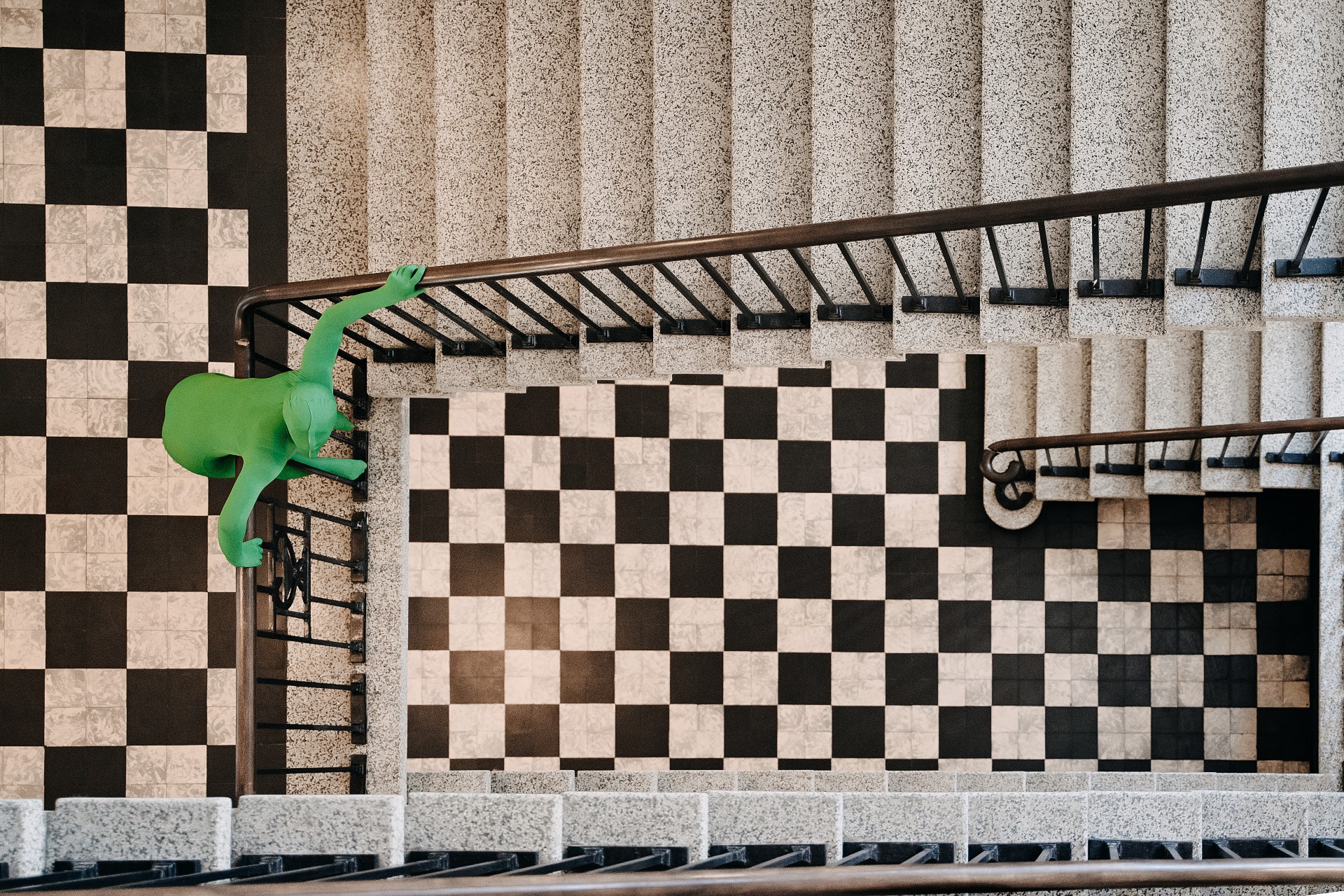
Architectural historian Dr Viltė Migonytė-Petrulienė will undoubtedly remember 2022 for the rest of her life. Curator of the architecture and heritage program Modernism for the Future of the project “Kaunas - European Capital of Culture 2022”, together with her team of assistants, this year turned the Kaunas Central Post Office into the Architecture Centre for several months, spread the message of optimistic Kaunas modernism all over the world, and now it is waiting for the world right here, in Kaunas. In September, the city will host the international conference Modernism for the Future. It will also include the premiere of a very special film, “Folds/Pleats”. What’s more, at the end of last year, the academic also published a monograph “Weekend Cities and Suburbs” about resorts in Lithuania! This time we left the topic of holidays aside - there was barely enough time to discuss the modernist movement, which has been rapidly growing for five years now.
What do you personally consider to be the greatest success of this program? Maybe it’s one small event, or maybe it’s your own new skills, acquaintances or even future projects?
Personally, the experience. I have never worked on a more interesting project, with so many opportunities and challenges, with such a professional team. Of course, not all the activities of the program had a smooth start, and not all the nights were for sleep, but all the experiences are worthwhile and precious. I would like to believe that our partners and the citizens of Kaunas will take away a similar feeling. When I started curating Modernism for the Future in 2018, I already saw how well the program had been strategically designed, how the target groups of activities had been logically distinguished, covering different audiences, how ambitious the goals had been set, and how the only thing left to do was to think about the means to achieve them, to try out new tools. It is true that we did not have a magic formula for success; we did not know what would work and what would not in our environment, and in the context of the European Capitals of Culture, exploring and interpreting architecture and heritage was not and is still not a common practice.
The biggest motivation was that Kaunas already had international recognition, having received the European Heritage Label in 2015, and various community initiatives such as guided tours etc. were gaining momentum alongside this. It was both a gift and a responsibility at the same time. We invited cultural organisations from Kaunas and other cities to share it. Despite the fact that we have been working hard for all five years, the first strong feeling that the program was really working was after the initial call for partners to apply for all the Capital of Culture branches. I feel that the idea of Modernism for the Future is a real success when I finally attend the partners' events this year. All of them are a seamless story of the success of the program and of different experiences. I have great faith in that.
Which partner events will you remember as highlights?
All of them! I couldn't have dreamt of better content for modernism. The partners’ programme covers a very broad audience, with different interests and age groups. From projects for architecture professionals and enthusiasts, such as: publishing a book on interwar architect Arnas Funkas (M. K. Čiurlionis National Museum of Art), a tactile interactive pavilion of architectural cognition created with the blind and visually impaired, the exhibition “Architecture of Lust” decoding the lustful secrets of the modernist city, or the Kaunas Architecture Festival (Lithuanian Architects’ Union), which brings together intercontinental architectural ideas, and the International Summer School (KTU), which brings together the most relevant themes of global contemporary architecture… To exhibitions presenting impressive photographic personalities (Kaunas Photography Gallery), art objects inspired by the stories of modernism in the city’s public spaces (Lithuanian Artists’ Union), presentations, lectures, exhibitions aimed at expanding the geographic boundaries of modernity, performances (Kaunas Artists’ House), experiential tours (“Ekskursas”, Kaunas Dance Theatre “Aura”), or forward-thinking music festival at a metal factory “Optimismo”, and world music concerts (GM Gyvai), spread across various spaces in Kaunas and Kaunas district.
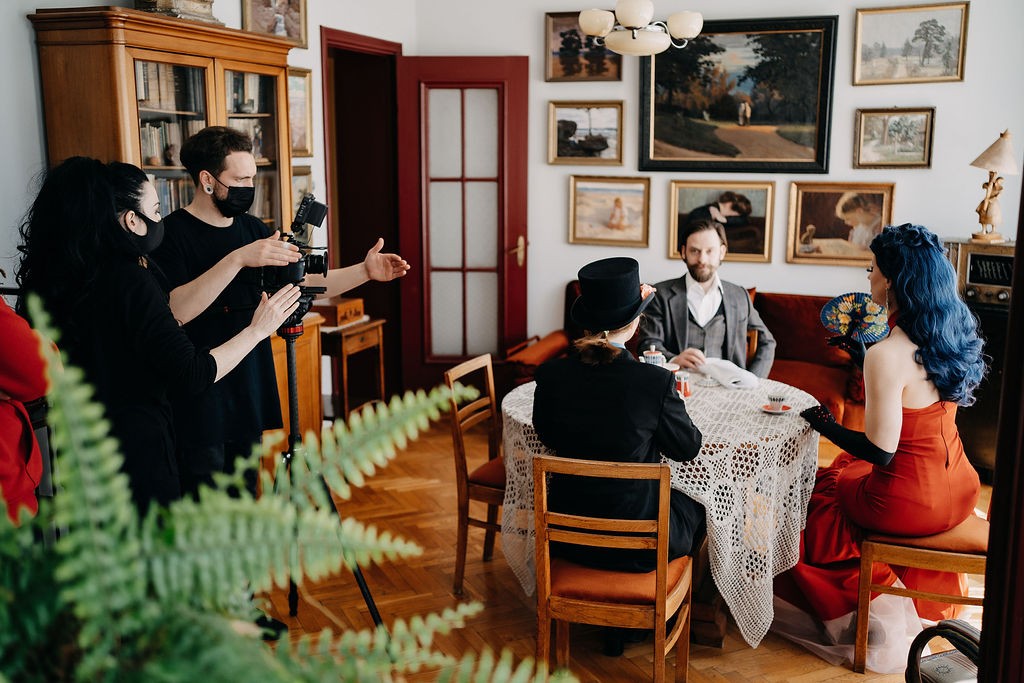
In January, the official start of Kaunas – European Capital of Culture was kicked off with the opening of the exhibition “MoFu 360/365”. In the context of the international exhibition and the whole program, the number 360 symbolises all possible perspectives on modernism: cultural, political, economic, and so on. Meanwhile, the number 365 refers to our attention to everyday heritage. How did you and your team manage to implement the 360/365 formula?
I have always seen the program as a platform for community and cross-sectoral heritage experiences, where we all learn, have the right to make mistakes, disagree, discover and co-create, and share the responsibility to make modernism even more understood, noticed and appreciated. I must confess that working directly with the community has never been a comfort zone for me, so I am extremely grateful to the team members who have taken the lead in reaching out to the local population. Žilvinas Rinkšelis and his team of volunteers have visited many modernist apartments, filmed dozens of interesting stories, and described hundreds of buildings on the Modernism for the Future website. In this way, the concept of the heritage of everyday life, encoded in the numbers 360/365, gradually took on a clearer form.
Yes, the number 360 means all possible perspectives of modernism: cultural, social, etc. They were touched upon not only in personal conversations with residents and public discussions but also in artistic interpretations made by artists from different fields of study about 20th-century architecture and the complexity of ideas that it represents, as well as about the different fates of buildings and society. In other words, the collected authentic testimonies about Kaunas Modernism became an inspiration for the creation of a new narrative and language that could be understood by a wider audience.
Meanwhile, the number 365 is intended to draw attention not only to the representativeness of churches, museums and other institutions but also to the architecture of everyday life: residential houses, industrial buildings or places of leisure. Was the language of modernist interpretations interesting to everyone? It would be naïve to think that everyone took in the heritage of this period and fell in love with it, just as everyone read or admired the messages conveyed by all the creators. This did not demotivate us but made us think more - how else can we do things? Where can we find the funds for the ideas?
I am glad that fortune was not standing there with its back turned and not far away, just waiting for a bigger effort, which paid off all four times with additional funding from Creative Europe and Interreg Europe. This has opened the door to international partnerships, inviting and welcoming artists from Ukraine, Belgium, the Czech Republic, Israel and other countries to tell a more coherent story of modernist architecture as a phenomenon experienced by Eastern, Central and Western European cities. There is also great support and enthusiasm from foreign embassies and the Lithuanian Cultural Institute. The result is still visible today. Right now, the Ukrainian artist Lia Dostlieva is visiting Kaunas for the whole month of August. Under the guidance of Monika Amyra Pociūtė, Lia is designing a futuristic costume that will combine the identity of the two cultures, in which she will also leave a message about the feeling of (at)building/(at)creating the future of her country.
How would you assess the involvement of Kaunas residents in their environment? Has it increased thanks to the initiatives of Modernism for the Future and its partners - excursions, exhibitions even for children, articles, videos, projects with dance and other arts... or has it sparked a greater love for the city? And is it love, or empathy, that is the feeling to talk about when it comes to the relationship between the city and the individual?
Kaunas is waking up and is certainly becoming more open to new experiences. I believe that inertia has been created by the activities of partners and the initiatives of citizens. Everything matters - the aforementioned excursions, international photography and architecture exhibitions, dance performances, intelligent contemporary and world music concerts, sculptural compositions that open up in unexpected spaces in the city, etc. Although there is a great deal of high-quality cultural content on the theme of architecture this year, I sometimes think that modernism as a phenomenon has a diminishing role to play here. Especially in the New Town, the cultural legacy of the interwar period is an ideal setting, which sometimes inspires, complements or assists, and sometimes helps to fulfil or reinforce the idea of the project, and adds a unique and significant touch to the art form. It clearly helps to increase knowledge, cultivate curiosity and understanding, and see the possibilities, which leads to a stronger emotional connection with one's surroundings. This leads to practical success in small or large heritage conservation processes. Some of them are linked to personal stories of love for modernism, others to political will and the pooling of intellectual resources.
One of the most anticipated events this year has been postponed because of the war in Ukraine. It is the inclusion of Kaunas modernist architecture in the UNESCO World Heritage List, which hasn’t happened because the UNESCO session in Russia was cancelled. What is the mood in your team regarding this issue?
Let’s be optimistic, though. While we are waiting and hoping for the capitulation of the aggressor, nobody is tying their hands to work together towards the preservation of heritage and the creation of a sustainable, quality city. UNESCO does not add value to the city, only notoriety, so it is the daily contribution and efforts of everyone that are important.
One of the highlights of the program, the stop motion film “Folds/Pleats” by Aideen Barry, has already been screened at several festivals abroad. What kind of response has the film received? What exciting things are planned for the premiere in Kaunas?
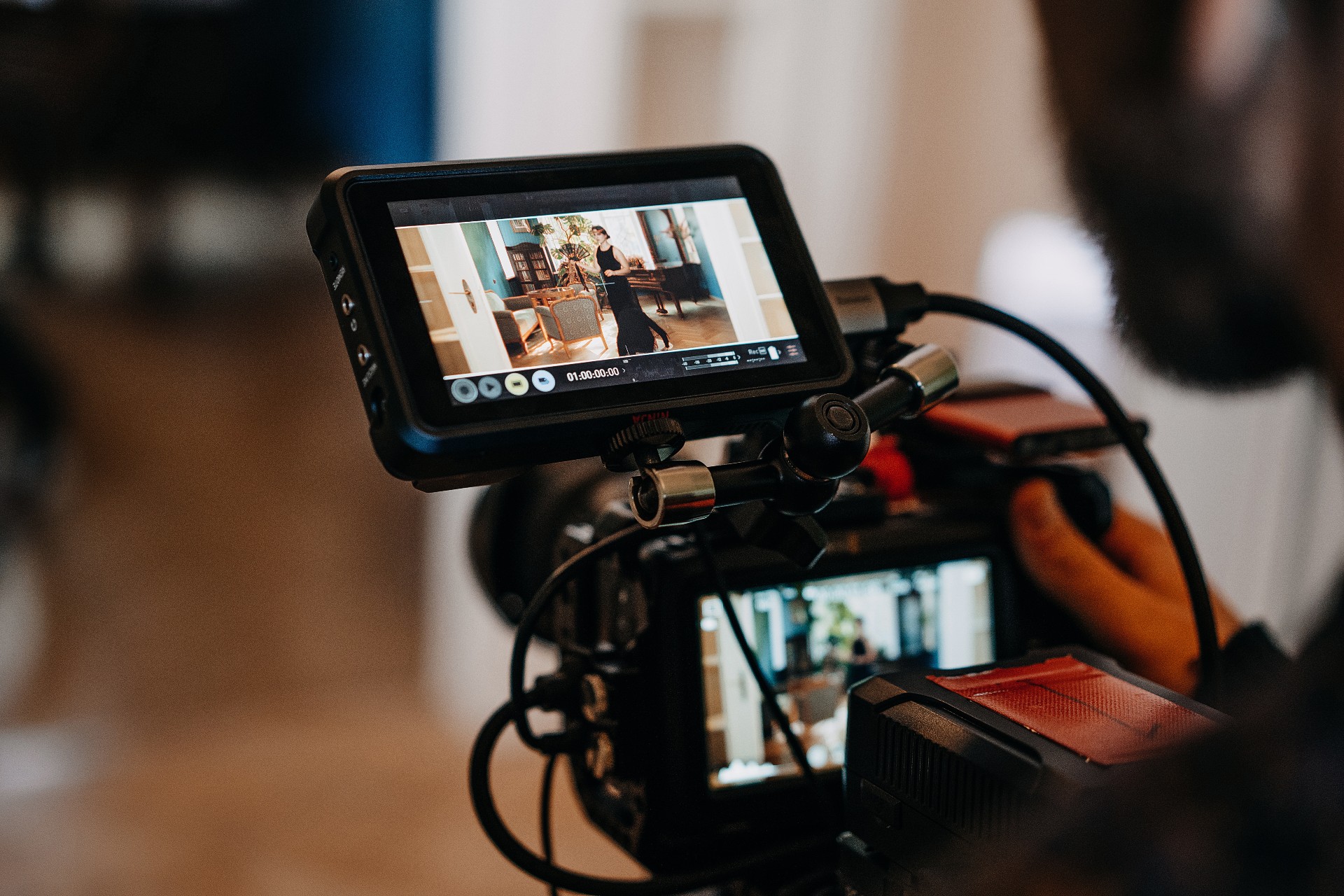
Firstly, I am glad to announce that the film, which has been screened since the beginning of the year on the big screens in Canada, England, Ireland and Italy, will finally be presented in Kaunas, at the historical Romuva cinema in September.
The organisers of the international festivals shared very positive feedback, and many spectators googled flight tickets to Kaunas right after screenings, as they became interested in the city’s history and cultural programme. Before the screenings, the audience was invited to read Sandra Bernotaitė’s text, in which the writer skilfully arranges the main accents of the film’s narrative, answering the question of what the role of architecture is as the main character and why the surrealistic aesthetics of the moving pictures is used, which arouses surprise and smiles. The premiere in Kaunas will be followed by an interesting conversation with the film’s director Aideen Barry, Sandra Bernotaitė and Rita Stanelytė, the film’s communications specialist who helped the film enter international festivals.
The project is also presented as a unique creative process that brought together more than 600 local people and professionals over a period of two years. The production of the film was accompanied by a pandemic, so its management was a huge effort for our team, and especially for the producer Ugnė Marija Andrijauskaitė. Enthusiasts of music, creative writing, stop-motion animation, and even food production students from the Kaunas Food Industry and Trade Training Centre, who, by the way, will invite the audience to enjoy a huge modernist cake after the screening of the film, were invited to get involved. Those who will not make it to the national premiere on 21 September will be able to see the film on 22-24 September. In the cinema foyer, viewers will be greeted by an experiential installation created by Aideen Barry, Povilas Vincentas Jankūnas and Mindaugas Barnatavičius.
Could you also reveal more about the upcoming Modernism for the Future international conference? How has it grown since the first edition in 2018?
The first conference, which was also the symbolic opening of the program, focused on the perception of the cultural value of the heritage of modernism and the search for the uniqueness of Kaunas, especially by drawing on the experiences of foreign countries. Among them, the video projects of Aideen Barry, who then visited Lithuania for the first time, were presented, as well as projects dedicated to sensitive social issues, contemporary creative and educational methods of heritage cognition applied by Sharon Golan Yaron at the Tel Aviv-Liebling House, discussion of the topic of national modernisms, which is also relevant to the Lithuanian context etc.
This year’s conference “Modernism for the Future. Interpretations” is scheduled for 21-22 and is the symbolic closure of our program. We will have much more to share ourselves. For five years, hundreds of citizens of the city and the district, dozens of cultural organisations and artists have worked, taught and given incredible experiences in the modern cultural heritage laboratory, and I believe that the two-day programme will be of interest and relevance to everyone.
The programme will span from creative workshops on the accessibility of heritage, to seminars on the role of contemporary interpretations based on the experience of Kaunas - European Capital of Culture, as well as topical conversations on the subject, presentations and discussions in the Žalgiro Arena with renowned New York artist, architect and heritage conservationist Jorge Otero-Pailos, architectural critic and researcher Grzegorz Piątek, architect, architectural historian, curator of architecture and art projects Ievgenija Gubkina, and many others. The programme also includes the opening of two exhibitions, the presentation of Marija Drėmaitė’s book on Arnas Funkas, and the premiere of the aforementioned stop-motion feature film. The symbolic farewell will therefore be very optimistic.
What plans does the Modernism for the Future team have for 2023 and beyond?
It is very difficult to talk or dream about the future, even if it is the near future, when there is so much work left to do with Vaiva Marija Bružaitė and other colleagues. I know that all modernists, whatever they do in the future, will have a special personal relationship with heritage. I can only wish them all that they do not lose their enthusiasm and do not get tired of sharing their lessons and experiences with others.
UKRAINE! UNMUTED: contemporary Ukrainian art in Kaunas – European Capital of Culture 2022
2022-07-29Current Issues,News,media-news,Pranešimai spaudai
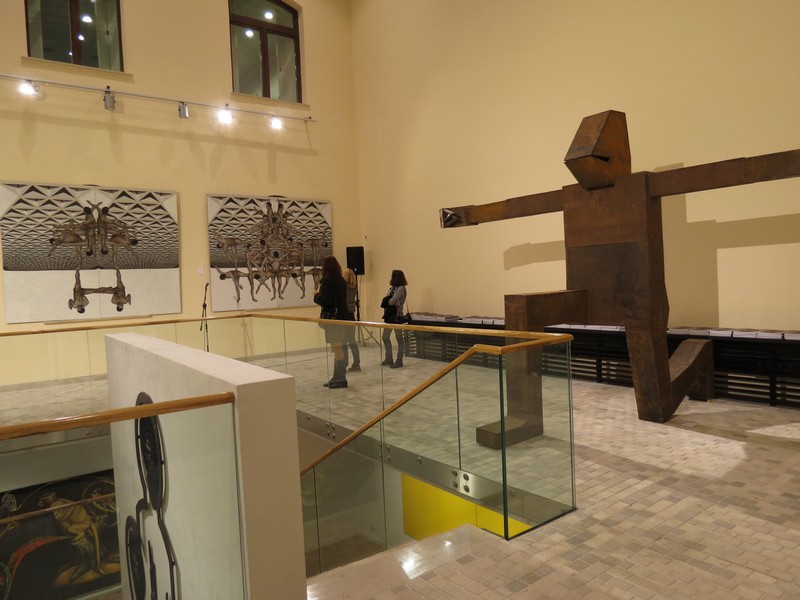
This fall, Kaunas will host a triennial of contemporary Ukrainian art — Ukrainian Cross-Section 2022. UKRAINE! UNMUTED presents the works of contemporary artists. Other parts of the project include discussions and a book of essays.
Ukrainian Cross-Section, a triennial of contemporary Ukrainian art, started as an attempt to expose what Ukrainian art has been with art telling for itself. The idea of Ukrainian Cross-Section is to present contemporary Ukrainian art to the new audiences outside of Ukraine.
The Fifth Ukrainian Cross-Section UKRAINE! UNMUTED will take place in fall 2022 in Kaunas (Lithuania). The project presents the works of Ukrainian artists. The curators are Vlodko Kaufman, Serhiy Petlyuk, and Oksana Forostyna, and Lida Savchenko-Duda is the manager of the triennial.
"Ukrainian voices became better heard when people noticed the explosions and turned on the sound. The war is the price Ukraine paid to be in the spotlight not only of reporters from around the world but also of cultural institutions and educated classes, of people who shape the artistic canon, create and destroy hierarchies, and declare cultural phenomena interesting and valuable or doomed to oblivion. Ukrainian artists have their scale of dividing times into good and bad: the periods of prosperity were usually the pauses between wars and repressions. And they fruitfully used that time, especially during the last 30 years. Though organically woven into the overall canvas of European culture despite all the obstacles, this art remained in the so-called blind zone, always present yet invisible. Ukrainian Cross-Section is an overview of what could not be heard behind transparent walls and seen behind optical illusions, a survey of what brings understanding closer," says the curators’ text for UKRAINE! UNMUTED.

Ukrainian Cross-Section 2022 has several components. The creative-cultural space “CulturEUkraine”, the former Kaunas Central Post Office, hosts the exhibition. The theme UKRAINE! UNMUTED will be explored during a series of discussions with speakers from Ukraine and abroad, as well as in a bilingual Ukrainian-English collection of texts by Ukrainian art critics, philosophers, and writers. The particular focus is the context of colonialism, and the reinterpretation and actualization of some special Ukrainian artistic phenomena of the 20th and 21st centuries.
The triennial is supported by Kaunas 2022 (Lithuania) and ZMIN Foundation (Ukraine).
The idea came up more than ten year ago in Lviv, in the milieu of Dzyga Art Association, one of the iconic cultural institutions in the city and Ukraine, and it was developed in cooperation with partners from Lublin, the Trans Kultura Foundation. It started with an ambition to grasp and to outline the “Ukrainianness” in contemporary art, to provide a meeting point for those authors considering Ukraine not just a territory, but “their important territory,” the territory for interacting, experiencing, and changing themselves.
The Cross-Section is a curatorial project. Now Ukrainian NGO Institute of Actual Art and the Cultural Strategy Institute, the municipal institution, are evolving the idea of Ukrainian Cross-Section.
Back in 2010, the first triennial in Lublin was an attempt to grasp the identity of Ukrainian contemporary art. Then in 2013 the self-analysis was paramount with the Lyman project in Lublin. And the next triennial reCREATION was a part of the European Capital of Culture 2016 program, the Lviv Month in Wroclaw: an exhibition, a retrospective of Ukrainian media art, and performances. It reflected on the state of the art in Ukraine while facing war and changes. In 2019 the Ukrainian Cross-section as a part of Culture Congress in Lviv was a chance for a critical revision of how Ukrainian art could interest global audiences.
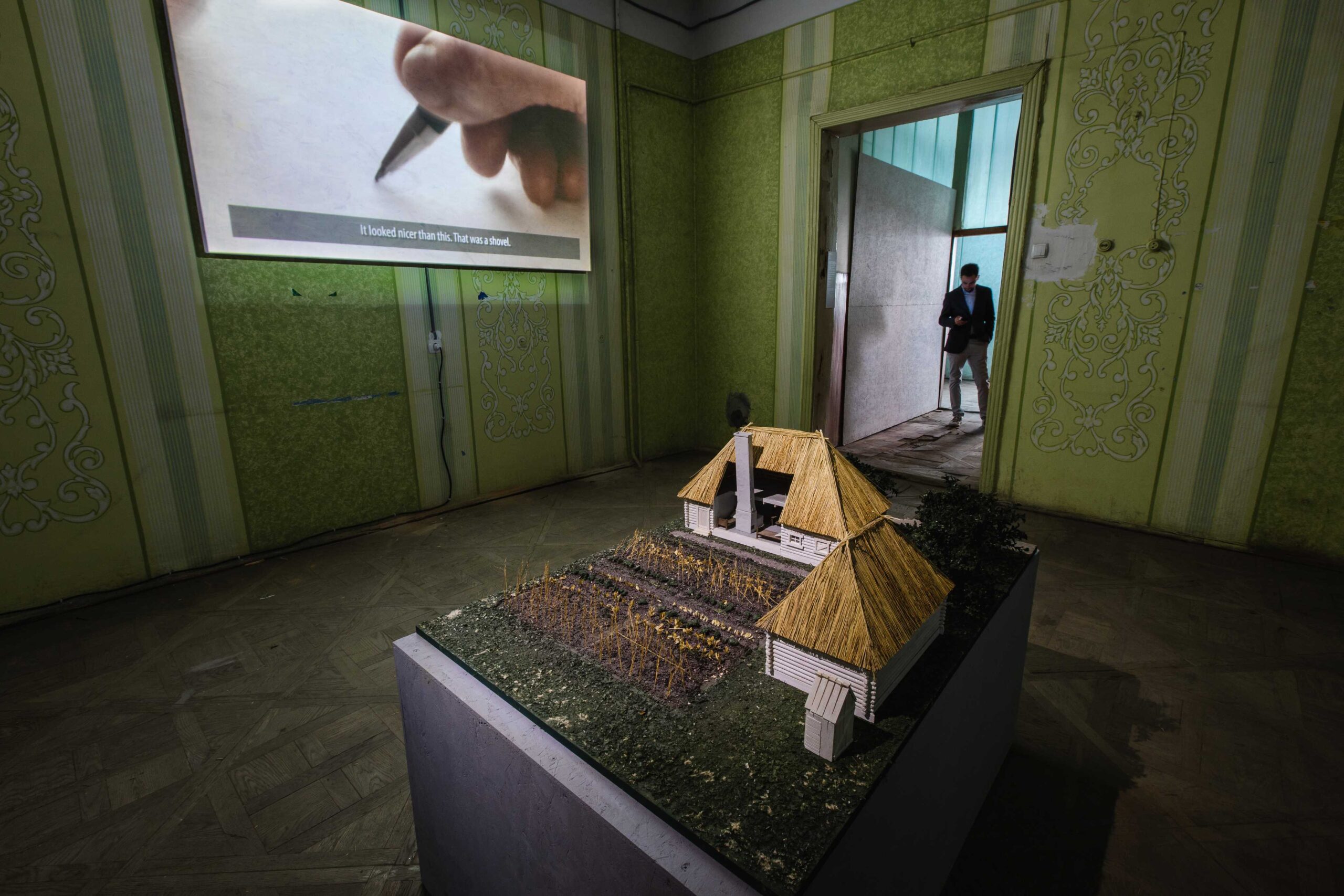
Every triennial welcomed artists from different cities of Ukraine. The reference point is the transformational processes of Ukrainian art in media, topics, discourses, interpretations, names, (im)mutability of traditions, and experimentation. Since 2010, Ukrainian Cross-Section has presented 172 art projects as well as works of 123 authors and art groups from Lviv, Kyiv, Kherson, Uzhhorod, Kharkiv, Odesa, Ivano-Frankivsk, Irpin, Sudova Vyshnya, Drohobych, Dnipro, Chernivtsi, Lutsk, Cherkasy, Zaporizhia, Donetsk, Vinnytsia, Sumy, and Poninka.
_______
The Institute of Actual Art (Lviv) is a non-profit organization for the development, promotion, and popularization of contemporary art. It works with Ukrainian Cross-Section, the Week of Contemporary Art, Days of Performance Art in Lviv, the School of Performance, and Transgressions, and other projects.
The Cultural Strategy Institute (Lviv) is a municipal institution established to coordinate the implementation and monitoring of the Lviv Culture Development Strategy for 2025. The mission of the Cultural Strategy Institute is analytical support for institutions and initiatives that operate in culture, enhancing institutional capacity and fostering the potential of Lviv cultural centers. https://isc.lviv.ua/en/
Virmenska 35 is an independent non-profit organization established in Lviv in 1998 to promote the development of multi-genre modern art: visual art, music, literature, theater, cinema, and multimedia. It aims at enhancing international cooperation in culture and realization of social and cultural interests of society.
ZMIN Foundation is a private Ukrainian foundation established to strengthen effective social transformation and sustainable development. The vision of the foundation is a proactive, inclusive civil society, responsive and able to join forces for a better tomorrow. https://www.zmin.foundation/eng/home-eng
Kaunas 2022 is the organization in charge of implementing the program Kaunas — European Capital of Culture 2022. The organization aims at the union of cultural organizations and creators in the Kaunas region, Lithuania and Europe to reveal the diversity of European cultures and local identity, which would involve local people and partners from various sectors. https://kaunas2022.eu/en/
Orchestras, Electronic Music and Lithuanian “Wedding” on the Kaunas 2022 Summer Stage in August

With Autumn and the season of events under the roof getting closer, every day is a fantastic opportunity to enjoy the sounds of music and culture in the open air. Running for the fourth month, the Kaunas 2022 Summer Stage at the Town Hall Square will offer more than a dozen events in August. The programme includes premieres, international friendships and a special evening dedicated to war-torn Ukraine.
A Unique Debut With an Orchestra
“This is a show I have been looking forward to since December when I first saw the teaser for “Laws of Distraction”. That was enough to make me realise that this will be an exceptional project. The recording took my breath away, and Kaunas will be the first time “Laws of Distraction” will be played live in front of an audience. This event is not to be missed - it’s the biggest cherry on the cake of the Summer Stage,” Eglė Aleksandravičiūtė, the producer of the Kaunas 2022 Summer Stage events, intrigued, talking about the gift arriving in Kaunas on 5 August. Monika Zenkevičiūtė, who hides under the Monikaze pseudonym, is the winner of this year’s MAMA Electronic Music Artist of the Year award and is of interest to a growing number of music lovers. “Laws of Distraction” is her solo programme with the St. Christopher Chamber Orchestra.

The Kaunas 2022 Summer Stage traditionally opens before the weekend - the beginning of August is no exception. On Thursday, 4 August, a delicate, intimate, and incredibly captivating musical evening led by Latvian vocal improvisation artist Dana Indāne-Surkienė will take place. Dana Indāne-Surkienė combines free voice improvisation and professional vocal techniques in her works. The artist will present her album “Gaidību dziesmas / Songs of Mother and Field”, dedicated to the subtle connection between an expectant mother and her child.
On 6 August, the Summer Stage will be open for young Lithuanian alternative artists. The soundtrack of the evening will be created by one of the most exciting performers in today’s Lithuanian music scene Goda Yorke (Goda Sasnauskaitė), who stands out for her artistry and vocal range, Gruodis, which started as a solo project and became an indie/postpunk band, and Orai, who stand for fast guitar dance music.
Portuguese and Lithuanians Evenings in the run-up to the Feast of the Assumption
Probably not many people know that Kaunas, which was full of diplomats between the two world wars, is today home to the Portuguese Consulate. At the invitation of the country’s Honorary Consul, Dalius Raškinis, and the Lisbon-based Camões Institute, the Lavoisier project will perform on 11 August in Town Hall Square. The duo introduces itself with a quote by the French scientist Antoine Laurent de Lavoisier: “In Nature, there are no losses; there is no creation, only transformations”. The Portuguese also draw on the spirit of tropicalismo and try to see music not only as a matter of individuality but as a full sense of awareness and presence in the world we’re living in right now.
Right before the long weekend of Žolinė (The Feast of Assumption), on 12 August, the group “Graži ir ta galinga” (Beautiful and Powerful), formed in the Klaipėda Youth Theatre, will give a concert at the Town Hall Square. The actors and musicians ask - what is common between a Renaissance beauty, a writer in a headscarf and a Soviet heroine? The three of them, invited by a group of friends, rush on stage to tell everyone what it means to be a woman in Lithuania and to take them not only to different historical periods but also to different stages of a woman’s life with varying styles of music.
Lithuanian “Wedding” and Guests From Germany
“A theatre without “Wedding” is not a theatre. The Germans have Bertolt Brecht, the Poles have Witold Gombrowicz and Stanislaw Wyspianski. We have OKT’s “Wedding,” theatre director Oskaras Koršunovas once said after the performance. Although based on Brecht’s play, the Lithuanian production is unique; the personal experiences of the artists and the reality around them are the essential material for the production. The actors react with lightning speed to the constantly changing societal events, and each time the audience is treated to a different evening - topical, full of recognisable situations and engaging. The Kaunas version of “Wedding” will be performed on 18 August in Town Hall Square.
On 19 August, the Munich female duo Umme Block will perform in Kaunas for the first time. Their visit results from Kaunas 2022’s friendship with Nürnberg POP Festival, an important showcase event in southern Germany. The duo creates vast soundscapes full of high tension. It’s a unique sound made of vocals, analogue synthesisers, electric guitar and beat machines, dreamy, melancholic, dramatic and thrilling.
Džiugas Širvys, lead singer of the mathematical rock band jautì, which performed at the Summer Stage in June, will present his solo work on 20 August. The artist does not shy away from the influences of the 1970s; his works subtly combine popular music with country and alternative music.
An Evening for Ukraine’s Independence Day
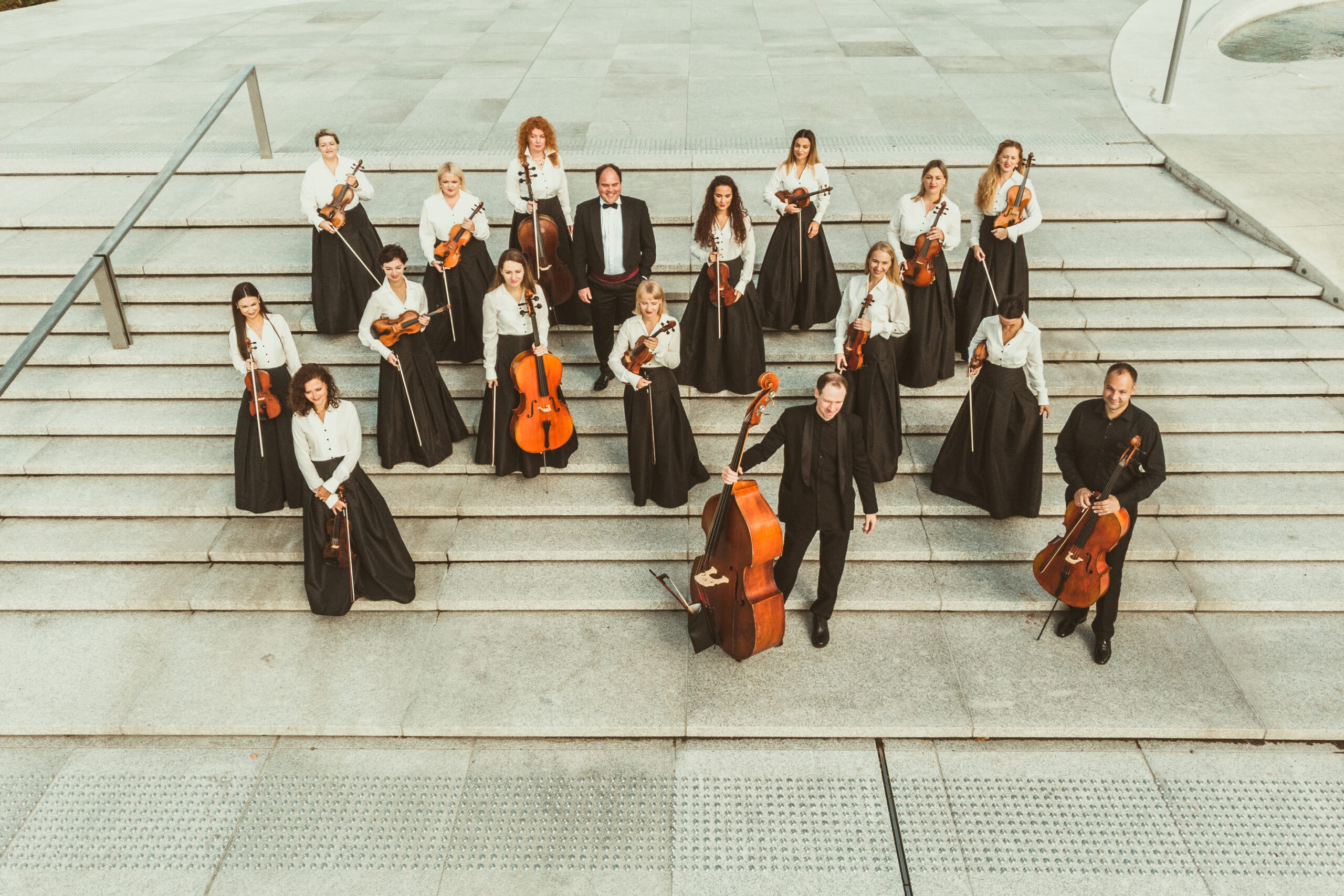
On Wednesday, 24 August, the Town Hall Square in Kaunas will be painted blue and yellow. A concert dedicated to Ukraine’s Independence Day will take place. The Summer stage will host the violin and bayan duo YeS Duet from Ukraine and the VMU Chamber Orchestra. The concert programme will include works by Ukrainian composers, famous classics by A. Vivaldi and J. S. Bach, and compositions for violin, bayan and chamber orchestra by composer Jievaras Jasinskis, specially written for the YeS Duet’s concert tour through Lithuania. This event expresses Kaunas 2022’s solidarity with Ukraine in war. Since March, the project has been running the CulturEUkraine centre in Kaunas Central Post Office, dedicated to war refugees who want to continue their favourite creative activities or start new ones.
Friends from Estonia
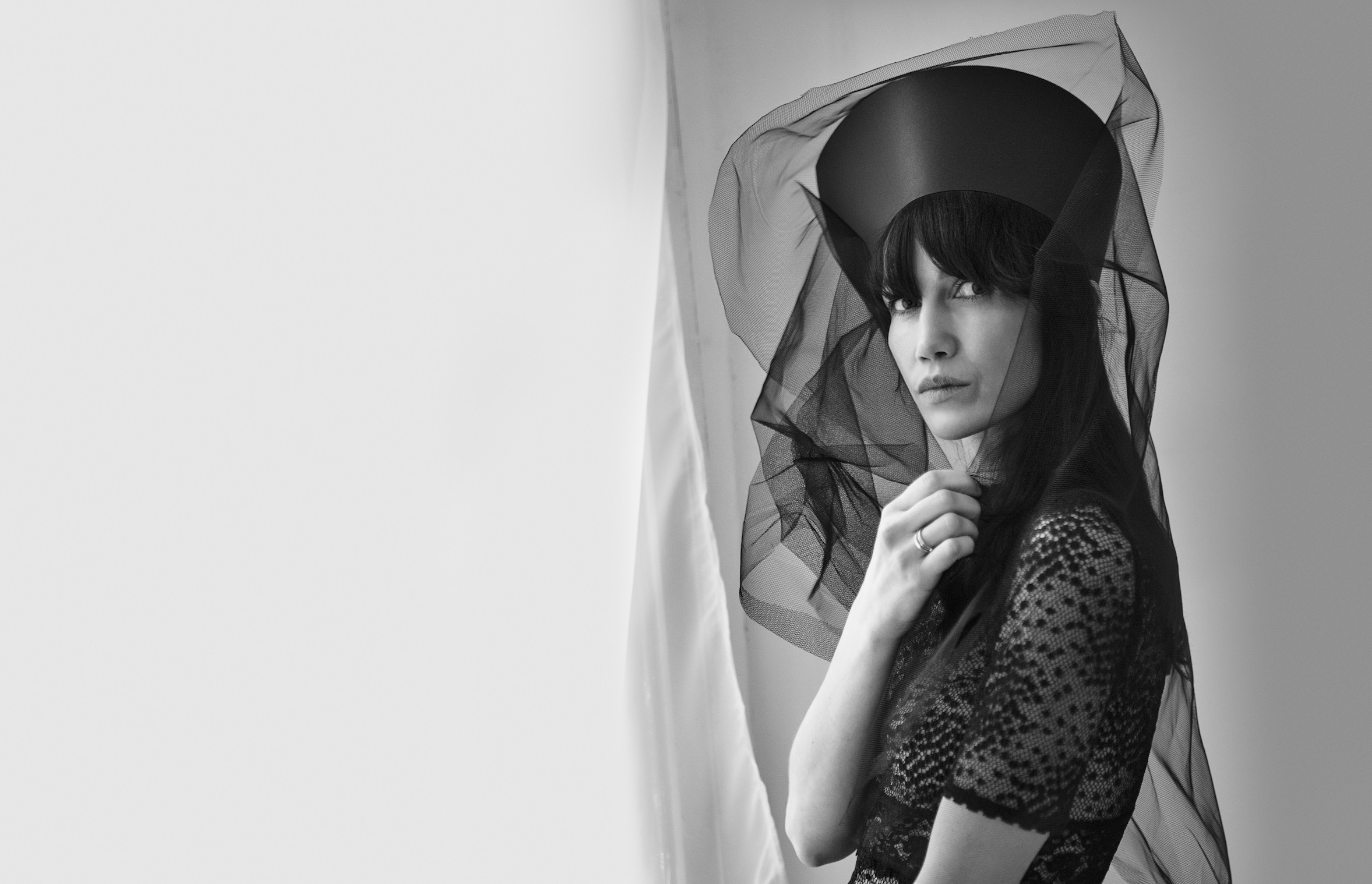
In less than two years, Tartu, an old friend of Kaunas, will become the European Capital of Culture. Have you ever heard that there used to be a restaurant called Tartu in Kaunas and a place named after Kaunas in Estonia? Artistic and cultural exchanges between the cities have also been taking place for years, and this tradition will continue with two end-of-summer concerts.
On 25 August, Anna Kaneelina will perform in Kaunas with her band. Kaneelina released her debut album in 2019 and charmed the audiences with her otherworldly stage presence and original ways of expressing herself. Bravely sharing her inner world and pouring into music both the pain and the beauty of life, she transfers the audience to a dreamlike wilderness.
On 26 August, Kaunas 2022 Summer Stage will be taken over by Jonas Kaarnamets. Now performing under the alias of Jonas f.k, he has been active in the Estonian music scene for almost ten years. In addition to being the founding member of the alternative/pop group Frankie Animal, he has also worked with some of the most successful and current Estonian artists. His solo creations are a melting pot of contemporary pop and darker electronic music, very well received by Estonian music critics.
All Kaunas 2022 Summer Stage events are free of charge. Concerts and other events at Kaunas Town Hall Square are planned until Autumn.
The European Capital of Culture programme in Kaunas and the Kaunas Region continues throughout the year, with hundreds of traditional and debut events planned for 2022, including exhibitions, festivals, performances and other activities created by local and international artists and Kaunas communities. For the full Kaunas 2022 programme, visit www.kaunas2022.eu or the mobile app.
Jenny Kagan on the Exhibition “Out of Darkness”: “Ultimately, my Parents Survived, and Ultimately, it’s a Love Story.”
2022-07-27Current Issues,News,Memory office
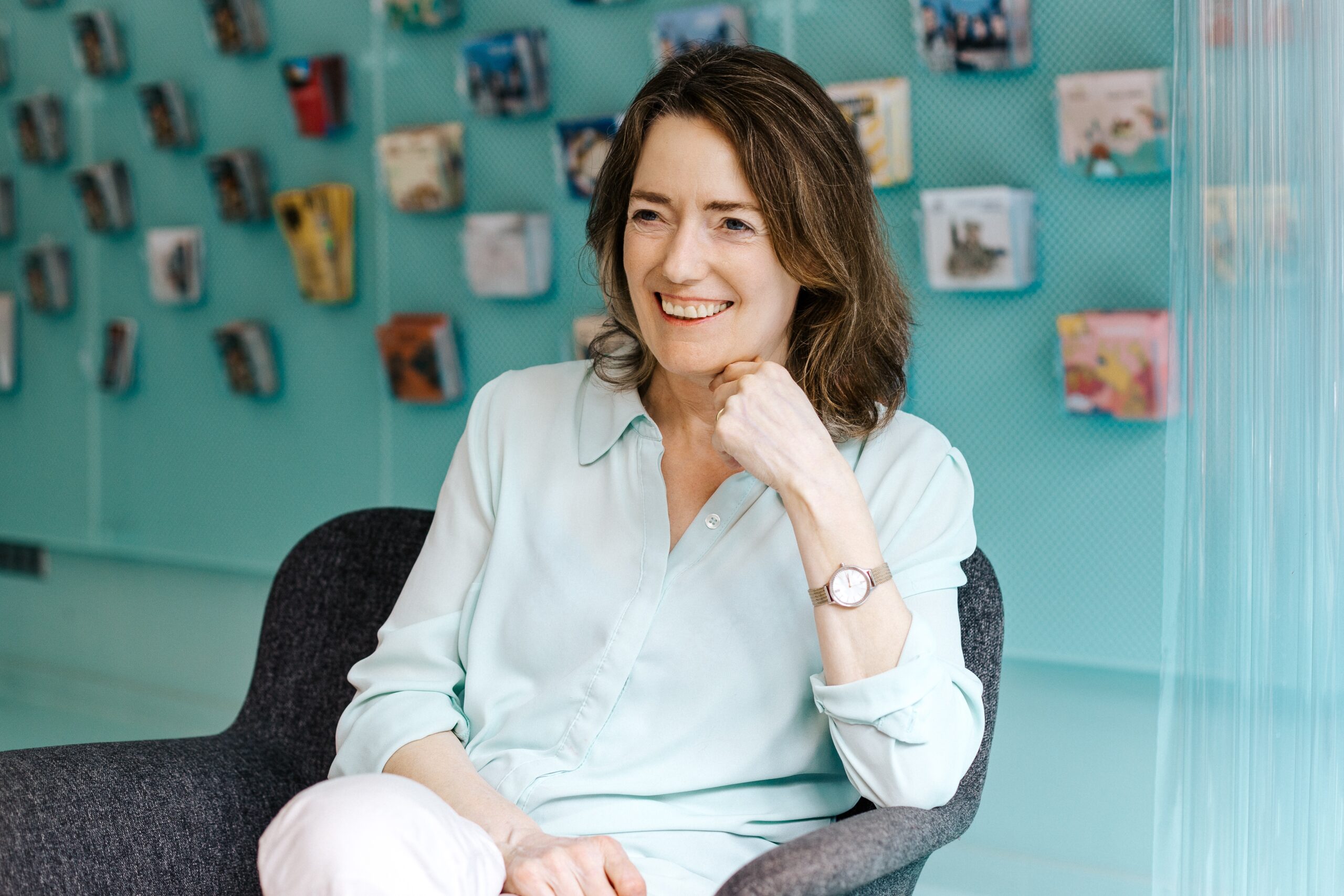
As Margarita Štromaitė wrote in her memoirs, during the Second World War, the lives of her, her future husband Juozas Kaganas, who she met in the Kaunas ghetto, and his mother Mira were saved by the family of Vytautas Rinkevičius. “<...> in spite of the mortal danger that threatened his entire family he built and equipped a shelter for us in the attic of the foundry. It was made in a part of the ridge separated by a false wall.” It was not until twenty years after the war that Margarita met her only relative who had survived the Holocaust, her brother Alexander Shtrom. In 1965, Margarita and Juozas, already known as Joseph had a daughter, Eugenia. Or Jenny.
Jenny Kagan presents the exhibition “Out of Darkness” in Kaunas, the European Capital of Culture, from 4 August. With sensitive artistic solutions, texts and sound, she reveals her family’s poignant story, at the same time uncovering the unknown pages of Kaunas’ memory. Nevertheless, it is a story about humanity and the light necessary for our survival as a civilisation. The exhibition at Gimnazijos St. 4 is part of the CityTelling Festival initiated by Kaunas 2022. The artist, who previously worked lighting designer in the theatre for many years, has agreed to tell us more about her creative journey.
“Out of Darkness” in Kaunas was announced a few years ago already. Did the past pandemic months influence the exhibition?
Securing a building took a lot of time – the one on Gimnazijos St. is the third one. In the first one, we couldn’t negotiate a deal with the owners that would work. I had already prepared a design... I visited Lithuania during the pandemic because my aunt Irena Veisaitė died. It was December 2020, and I also wanted to see the second building the team found. It wasn’t anywhere near as good as the first one, but by that point, I was like, “We have to start.” I went away and designed the show for there. I made a model and did it all. Then the owners withdrew… And this building came up, and last summer, we finally were certain we had it. The show is very much about the venue.
The building is close to the synagogue you worked in during the Kaunas Biennial.
I know! My mom went to the school over the road, and my grandfather lived a few hundred yards away at one point, so it’s a really great location. Its owner is an amazing person. They asked me, which bit of building I would want to use, and I asked for all of it. There is no way to get between the spaces on the ground floor of the building, and there are no stairs to go upstairs. I came up with this crazy idea to build corridors to connect the parts. We decided to build these scaffolding corridors so we’ll use all three parts and you’ll come out and into the car park and along a corridor and then onto the street into a corridor and then into the other building so it’ll be quite an adventure. I’m banking on the fact that it’ll be so interesting just going to the building; it doesn’t really matter if the work is not fabulous (laughs).
But really, it does help. When I did the show in the UK in 2016, the building was half of the atmosphere. It’s just exciting to go somewhere and explore it, so you start on a win.
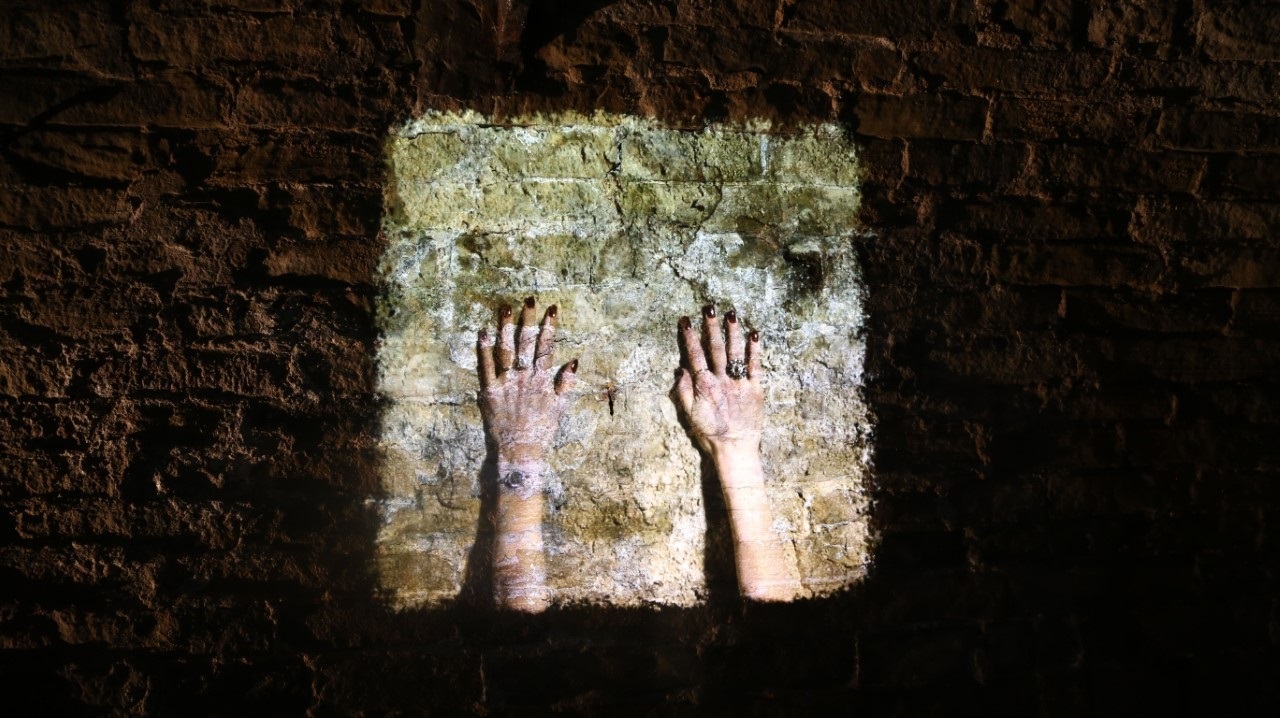
How much of the content has changed since 2016? Maybe you have made some new discoveries or some new artistic work?
Loads and new loads of it have changed. It’s changed much more than I ever expected it to. Some of it was because of the restraints of the building. When I did it before, I did it in an old theatre, so a lot of things were based on things hanging because there was a grid everywhere. Here, the owners said we could do anything to the building but couldn’t hang anything from the ceiling.
Can you tell us more about the genesis of the show?
The show initially consisted of three central pieces. It all started with my mom, as my father had already passed away. Both my parents always used to talk about their time in the shelter, in the box. The box was the family story.
About 12 years ago, I stopped doing theatre and did a drawing degree. I had to do a project, and I asked my mom, “Why don’t we draw the box together?” Because she’d always told me stories of it. When I was a kid, I imagined it as a toy box, but when I got older, I went to the Anne Frank House and saw this apartment. I thought, “Oh, this is what a hiding place looks like.” Much later, I talked to my mom a bit more and realised that it was actually closer to my first imaginings, so I said, “Why don’t we draw the box so we can visualise it?” We started to do that, and I couldn’t draw very well. She’d look at these drawings and go, “Oh, I didn’t know.”
At that point, I started to make little models and bring them to her. She’d say, “Oh, it’s a bit bigger, and the bed was here,” and so we did that. Then I built a mockup, and she walked in and said, “The door’s on the wrong side.” So, I made a replica of the box for my college project. She came to the final show and said, “It’s great, but still a little bit too big.” I guess I was always trying to make it bigger because I couldn’t believe it was really that small.
The local museum wanted to exhibit that summer, but it wouldn’t go through the door. I took another 6 inches off it. Mother came to see it and said, “Now it’s a perfect size.”
Two years later, my mother died. I wanted to continue working with the piece, as I’d never really got to grips. I’d got the box size, but I didn’t really understand where it was in the building and how it worked. I went back and looked through all my father’s papers to see if there were any more descriptions, and I found his description of it, and in his version, it was slightly different. I thought that was really interesting, and then I built his version.
So in the show, there’s his version, her version, and my memory of the toy box version. That was what the show was built around there. This and the idea of memory not being something fixed was the first foundation. The three hiding places are slightly different in Kaunas, but they’re still there.
Then the second linchpin was the Big Action. I was born on the 28th of October, so this was always a big thing for my mom. I always wanted to do work about Big Action. It was always about being sent to the left or the right and about getting people to feel in a very visceral way how delicate that moment is and how easy it is for it to go in either direction.
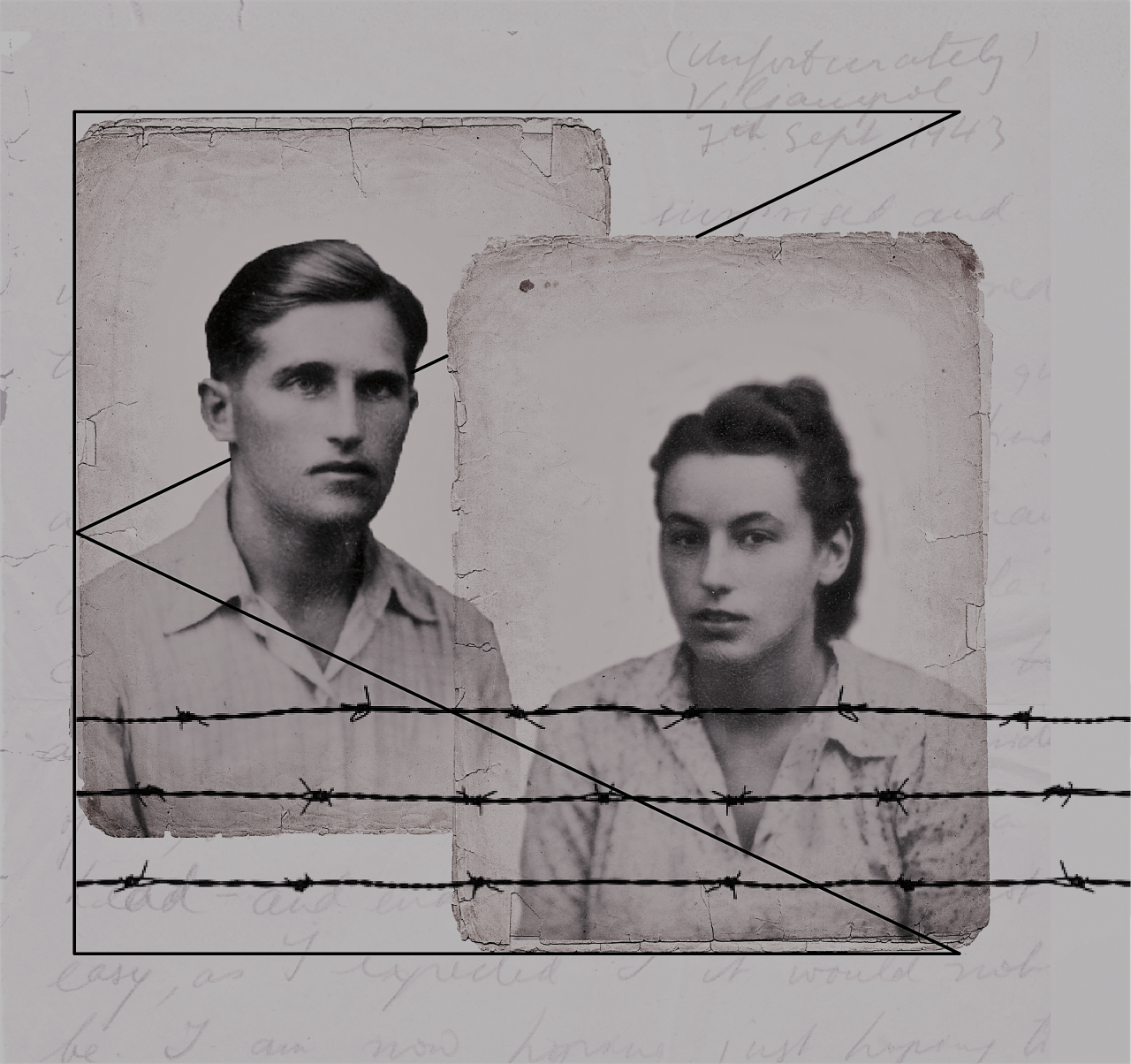
I built this maze which had three stations. There’s a Jewish game, dreidel. There were dreidels that you spun, and you would go either to one side or the other through this maze of barbed wire. That piece would not work in Kaunas. I spent a long time trying to squeeze it in, and then I realised I just had to change it. It’s turned into a games room, but it’s the same idea. It’s about that feeling of chance and that it could go either way at any time.
The third piece, central to the show, is the starscape of barbed wire, which is very beautiful. I wanted something uplifting because it’s a hard story to tell. Ultimately, my parents survived, and ultimately, it’s a love story. In the Kaunas version, the starscape of barbed wire is still there, but finding a space for it was really tricky. It’s smaller, and I hope it will be extraordinary.
It was very important for me to have something that people could enjoy. I know it sounds crazy, but all the way through, I think that if you’re going to ask people to listen to this story, you need to give them a way to enjoy the experience. It’s important to me to talk to young people and for them to engage with it. So the games room felt like an excellent idea.
I am thinking about the legacy of Anne Frank. Recently an animated film by Israeli director Ari Folman came out, which features Anne’s imaginary friend, and I believe this is the right way to connect to younger audiences. The youngest ones, which is crucial.
Yes. The thing I implemented this time that I didn’t do last time is talking about the Lietūkis massacre because my grandfather was killed there. It doesn’t mean anything in England, but here I’ve been struck by how few people know about it. I met a bunch of people working on the show, who are all educated, interested people in their 30s and 40s, all living in Kaunas, and none of the three had heard about it.
Telling that story is really hard and really important. A lot of my thinking has been around how to do that. My grandfather owned a cinema called Pasaka, and we reconstructed its neon sign for the show. When I realised ‘Pasaka’ means’ fairytale’, I was like, “What a gift!”
Have you been inside the cinema, which today is a gentlemen’s club?
No. I go past it. I have a new piece at the end, which uses photographs. When I was a kid, my mom had a photo album with family photos, and on the back page were two photographs of Lietūkis. A German paper newspaper in the ’50s published photographs, and she got copies and put them in a family photo album.
Of course, the other big new thing is that I’m working in two languages. Anything that’s a challenge produces something interesting. There’s also more sound, as we now recorded pieces in both languages. There used to be too much to read in the first show, and there’s still a lot! There are many books in the show that you open, and the rule is you should be able to read it all in 30 seconds because I think that’s people’s attention span. It’s just about giving people enough context so that the pieces make sense. Some people will spend hours reading every word, and then others won’t read any of it. That’s fine. It’s designed to work for however you engage with it.
Isn’t that where your years of experience in theatre production come in?
I would say it’s like a theatre without any actors. I don’t know how a Lithuanian audience will react. In England, first, we had all these suitcases you can open, and the first audiences didn’t touch them. In the end, I wrote on them, “Open me.” Then people went for it. It’s about finding out how much I must tell people to do so; there are drawers to open and telephones to pick up. Will people pick up the phone if it rings? Will they open every drawer? That’s a voyage of discovery, and I’m sure I will keep changing things. Also, I’m going to work quite closely with that team. Hopefully, they’ll be able to encourage people to interact.
When you first started sketching the box with your mother, could you imagine that in 12 years or so, you would be opening an exhibition in her hometown? What were her feelings about Lithuania? Did she come here after the war?
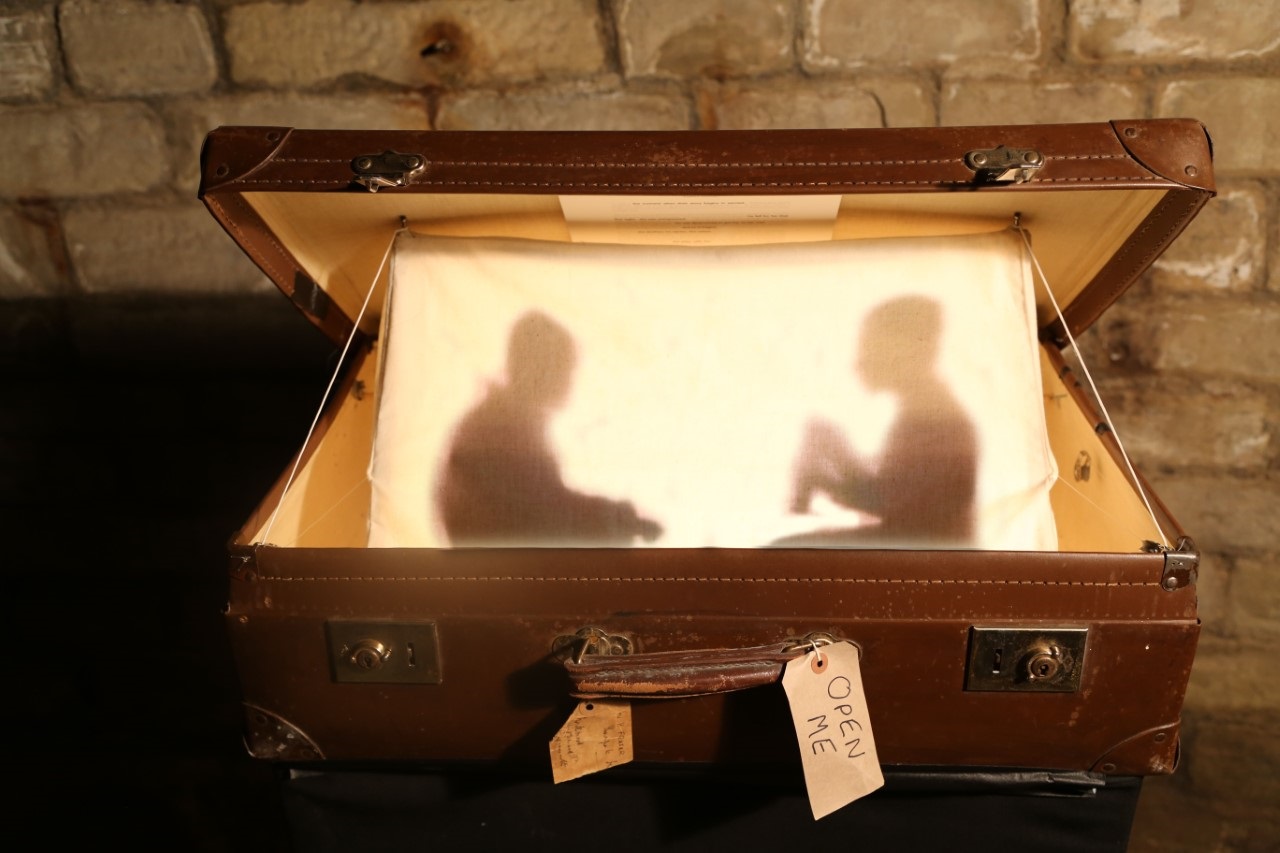
My mom came regularly. I came with her. She shared an outlook on life that one can’t judge. One can only judge people who commit acts, not anyone around them, and it’s people, not nationalities. One of the many stories she told me and wrote down was about going to the European basketball final in 1939, for which the sports hall was built. When Lithuania beat Latvia, she writes about how horrified she was that the Lithuanian audience was booing the Latvian players. It’s so her. She was 16. That’s the golden diary entry for the first entry. It tells her position really clearly. There’s another story about after they come out of the ghetto and the Germans were retreating. She was walking down the road with a friend, and a German soldier was sitting. They walked past him, and her friend was smoking. The German said to her friend, “Have you got a cigarette, mate?” Her friend looked at him like the soldier was the dirt on the bottom of his shoe. She was horrified, her entire family had been killed by the Germans, but, she said, this was one man, and all he wanted was a cigarette. That was very much her outlook. That man hadn’t done anything necessarily.
Do you share the same outlook?
I think it’s the only way to go forward.
Have you ever thought about what would have happened if your parents had stayed in Lithuania?
I never have.
I think even your name would be different.
Actually, I’m named after my grandmother Eugenia, so Jenny is an abbreviation of Eugenia. It first became Jenia, and then it became Jenny. I think it would’ve been different because my parents would’ve been very different. My father was extraordinarily successful in England, and I think he probably would’ve been successful wherever he was. Maybe he’d have been accepted more here, in Lithuania. He was always the jumped-up Jewish emigrant in England who got above his station.
He wanted to be accepted into the high echelons of British society and eventually became a Lord. You’d think that was it, but he recognised it was his great sadness that no matter how much he achieved, he was never quite going to be part of that elite that he hankered after being part of.
My mom, she had never been to England. My father was already living there before the war, and his family were in England. After the war, he wanted to go back to England. Her only surviving relative was her little brother Aleksander Shtromas, who was in Lithuania. She needed to stay here. The thing that tipped her into going was that, once she found out about Lietūkis. How to live in a city, where anyone walking past on the street might have killed your father? That’s what encouraged her to leave.
Kaunas 2022 team surprised MEPs: we have never seen this before
2022-07-22News,media-news,Uncategorized,Current Issues
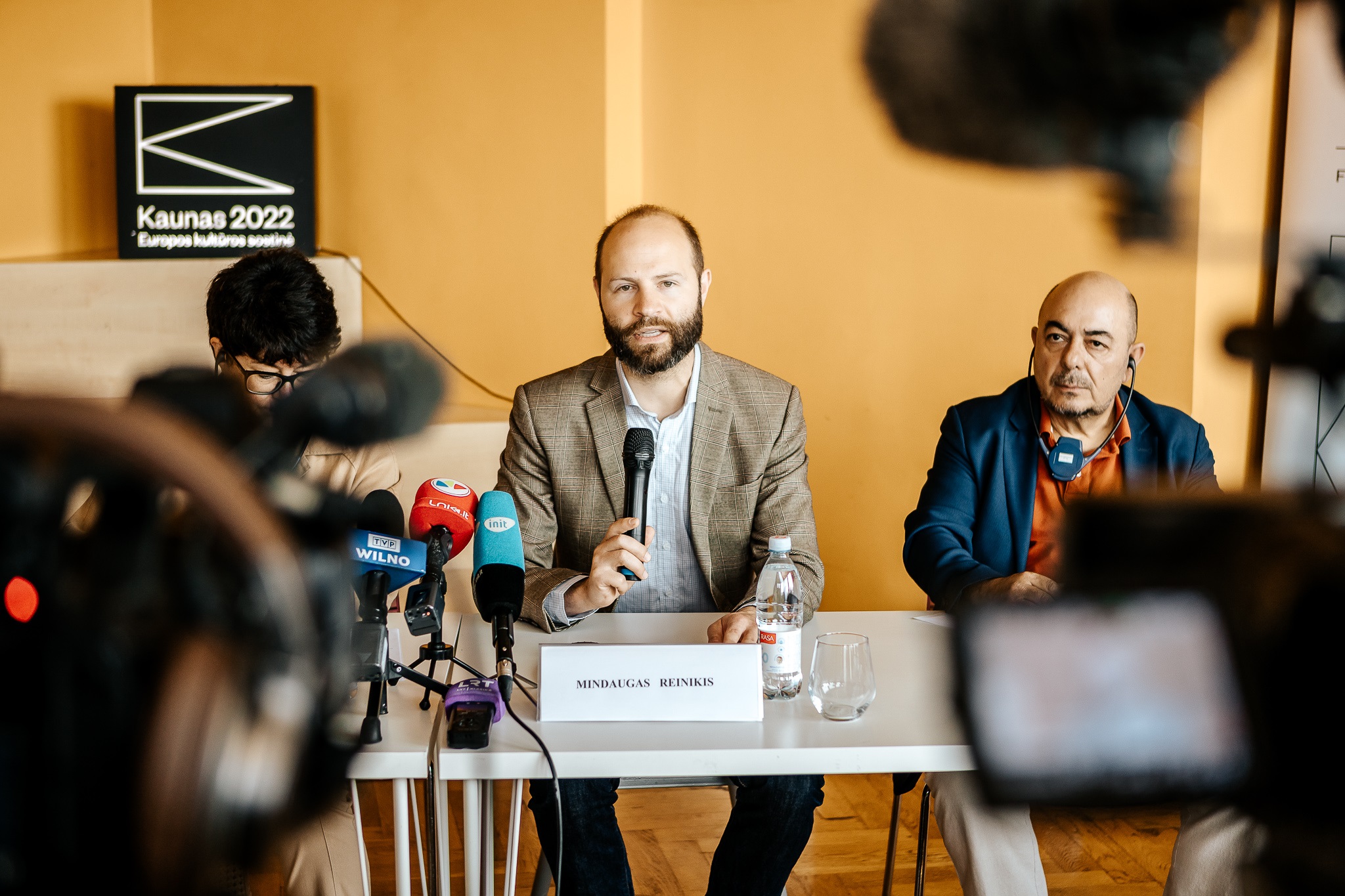
Kaunas – the 2022 European Capital of Culture attracts more and more attention and international visits. On July 18-20th the city received important guests – a delegation from the Committee on Culture and Education (CULT) of the European Parliament. They met with the representatives of the Ministry of Culture, Kaunas City Municipality and organizers of the Kaunas 2022 programme.
A delegation of six MEPs visited Kaunas for three days - they not only participated in the various meetings but also visited a considerable part of the ongoing events and exhibitions. According to S. Verheyen, the chairwoman of the CULT, the most important questions were the legacy of the programme and what awaits the city when the year of the Capital of Culture ends.
“Our goal was not so much to verify the facts, we wanted to see the long-term perspectives. It was clear that while hosting world-famous artists, Kaunas dedicated a lot of attention to the issues of city identity, community building, and inclusion of young artists. It is great to see how local communities, private and public sectors are joining the project. It is very important that local people are involved in the programme, so that the culture develops from the community itself, brings joy, and encourages people to participate,” said S. Verheyen.
In her speech, A. Verneyen emphasized multiple events and initiatives taking place in Kaunas and Kaunas district, the unique dredger boat “Nemuno7”, the modernist architecture of the city, and the involvement of former and current European Capitals of Culture in the programme.
The members of the delegation were also impressed that the city is not afraid to tell stories that often do not reach the public. “Untold stories, painful twists of the city's history must also be heard,” said N. Kizilyürek.
It is not the first year for Kaunas city and region to host these events - the programme has been developed together with local communities for five years. Kaunas region is holding events for the “Contemporary neighborhoods”, and the suburbs are enjoying festivals and the internationally acknowledged project “Culture to the Courtyards”. The Kaunas 2022 programme also aims to revive and turn various objects and spaces into new places of cultural attraction – the public art route “Emerald road” was opened in the Kaunas district, and the dredger boat “Nemuno 7” was turned into an exhibition space. In the former central palace of Kaunas Post Office, there is a space dedicated to Ukrainian artists and creatives named “CulturEUkraine”. Meetings, exhibitions, and other activities are organized at this center of open cooperation.
The attention of MEPs was also attracted by Mythical Beast of Kaunas
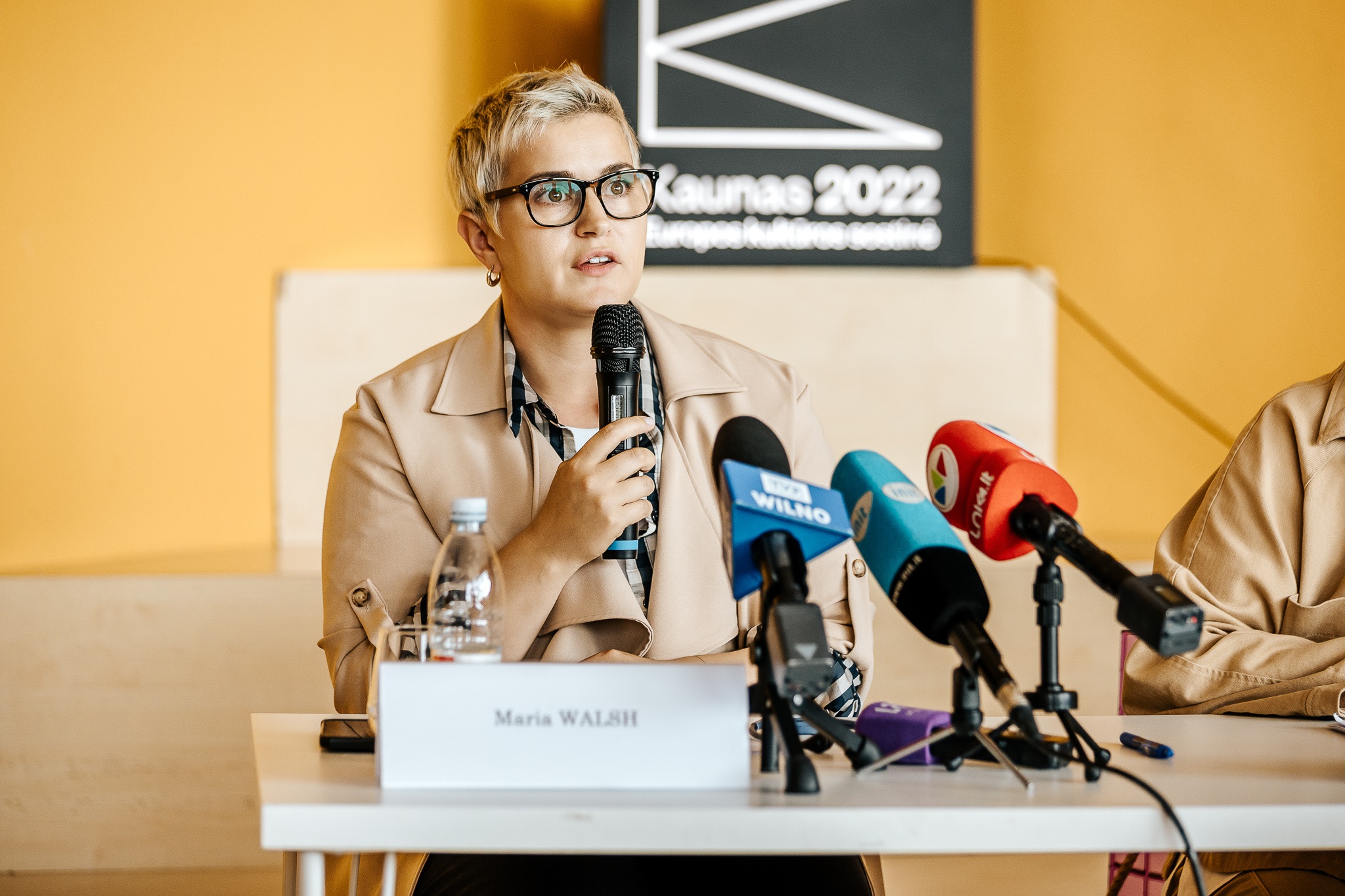
MEPs were very impressed by the Mythical Beast of Kaunas. Created by the community itself and becoming a myth and mascot of the city, the Mythical Beast of Kaunas is inseparable from the Kaunas 2022 programme. It also unites the three main events of the Capital of Culture – the “Confusion”, which opened the programme, the “Confluence” that flooded the city at the end of spring, and the “Contract” that will take place in the autumn. In the city, you can also see the sculpture of the Mythical Beast, the design of which was created by Darius Petreikis, the tooth of a mythical creature made by ceramicist prof. Remigijus Sederevičius, and in the entrances of Kaunas Castle you can hear the snoring of the Beast.
“We have never seen the myth associated with the European Capital of Culture. I think it's a great way to involve both children and adults,” Ms Verheyen said. “It is also very interesting that in many years' time people will remember this myth as their own, perhaps without even knowing that it was created in the year of the European Capital of Culture.”
The events will continue beyond the end of the European Year of Culture in Kaunas
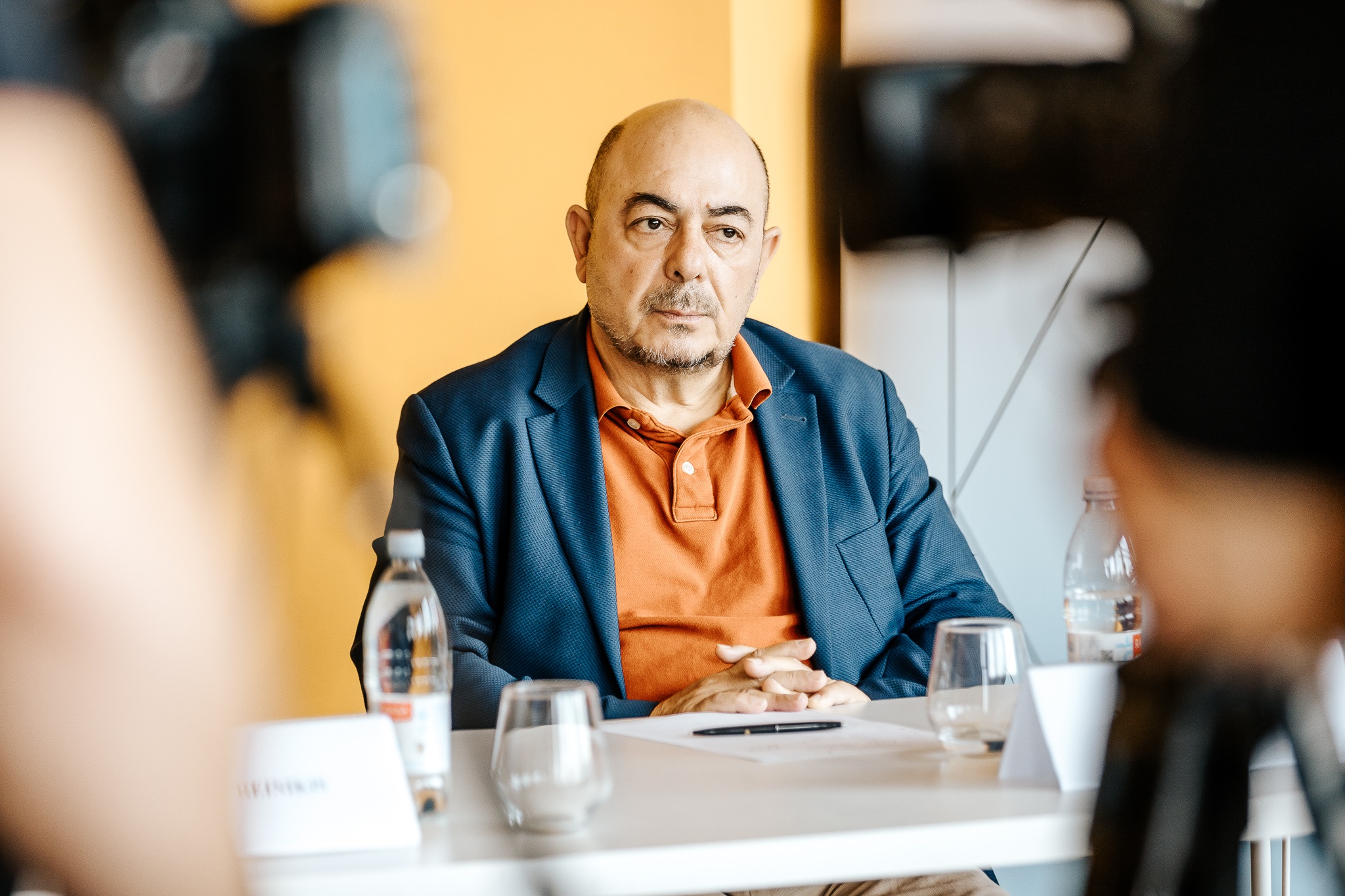
According to Mindaugas Reinikis, Head of Marketing and Communication at Kaunas 2022, Kaunas has grown into a contemporary capital of culture, therefore, even after the end of the year of the Capital of Culture, residents will continue to enjoy an active cultural life. Among the events planned for the future are the “Day of Happiness”, the festival “Audra”, the European Capital of Culture Forum, the community programme “Fluxus Labs!”, “Nemuno7” and other initiatives and events.
By the end of the year, Kaunas 2022 will invite you to multiple events and exhibitions. For the remaining months, Kaunas residents and guests of the city will be delighted by the international festival of performing arts “ConTempo”, “CityTelling Festival”, landscape design festival “Magenta”, “Fluxus festival”, Yoko Ono's retrospective “The Learning Garden of Freedom”, and a conclusion of these events by the last part of the trilogy the "Contract".
The delegation of the EP's Committee on Culture and Education consisted of Chairwoman S. Verheyen (European People's Party, Germany) and MEPs Niyazi Kizilyürek ("Left", Cyprus), Marcos Ros Sempere (Socialists and Democrats, Spain), Tomasz Frankowski (European People's Party, Poland), Maria Walsh (European People's Party, Ireland) and Irena Joveva ("Renew Europe", Slovenia).
Photos by Gražvydas Jovaiša


